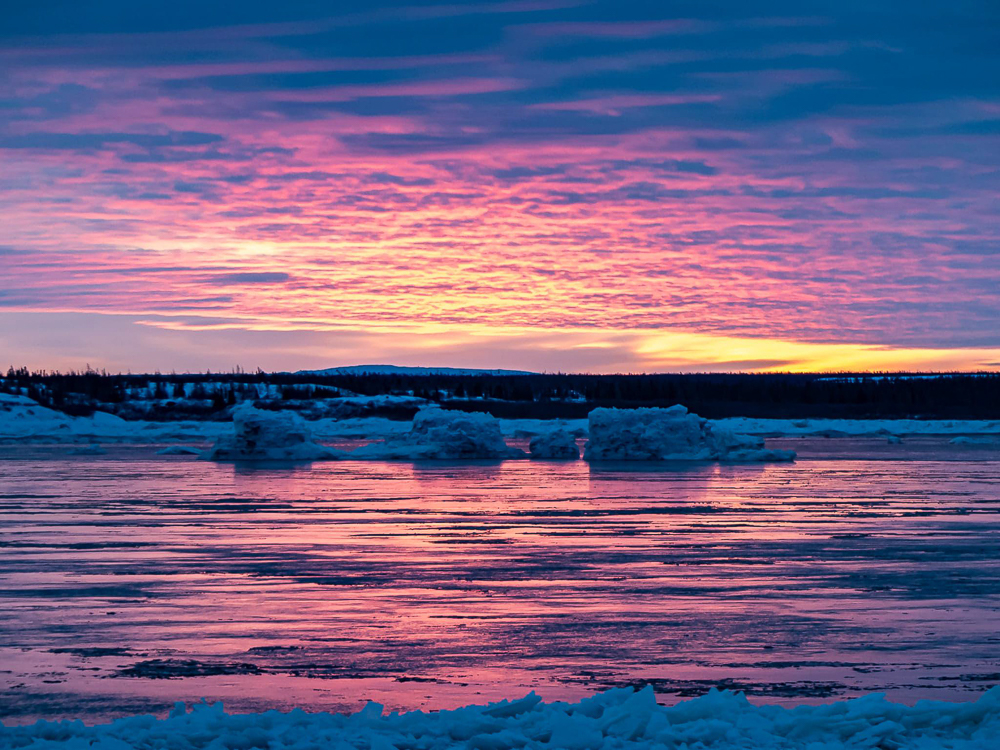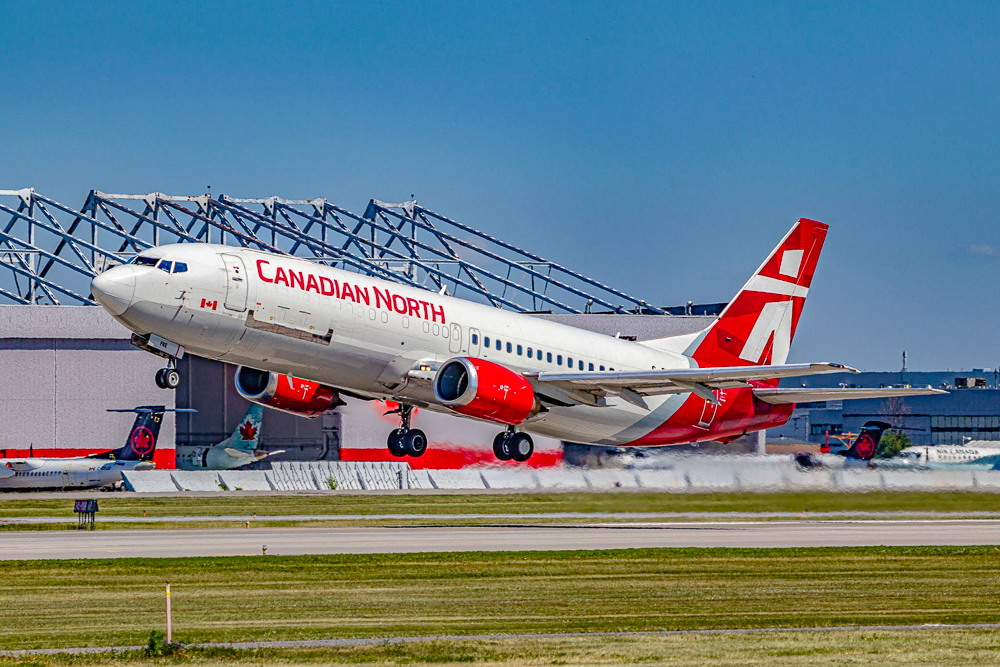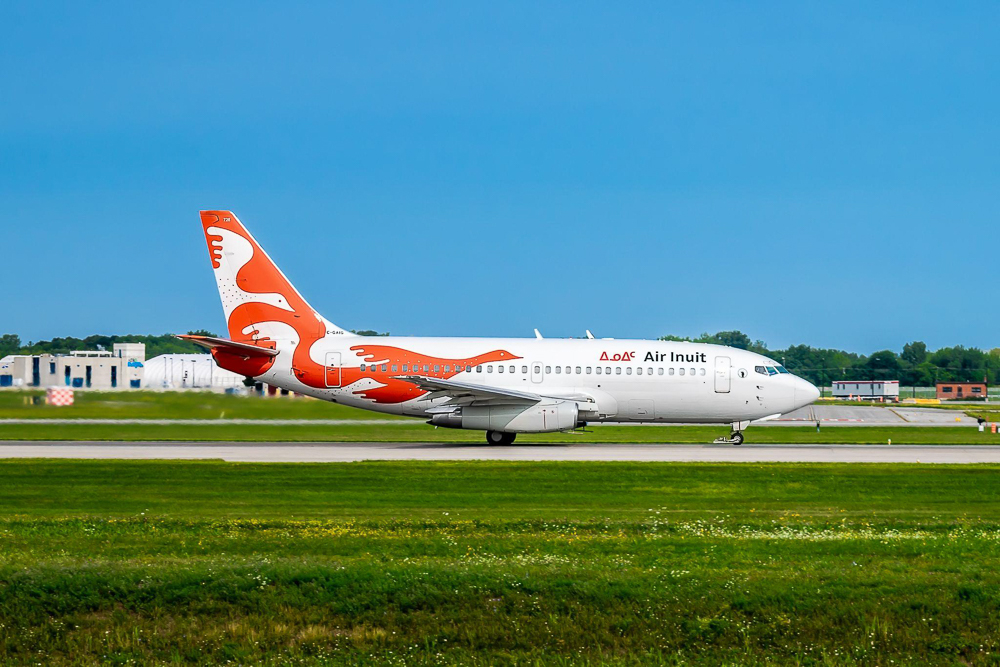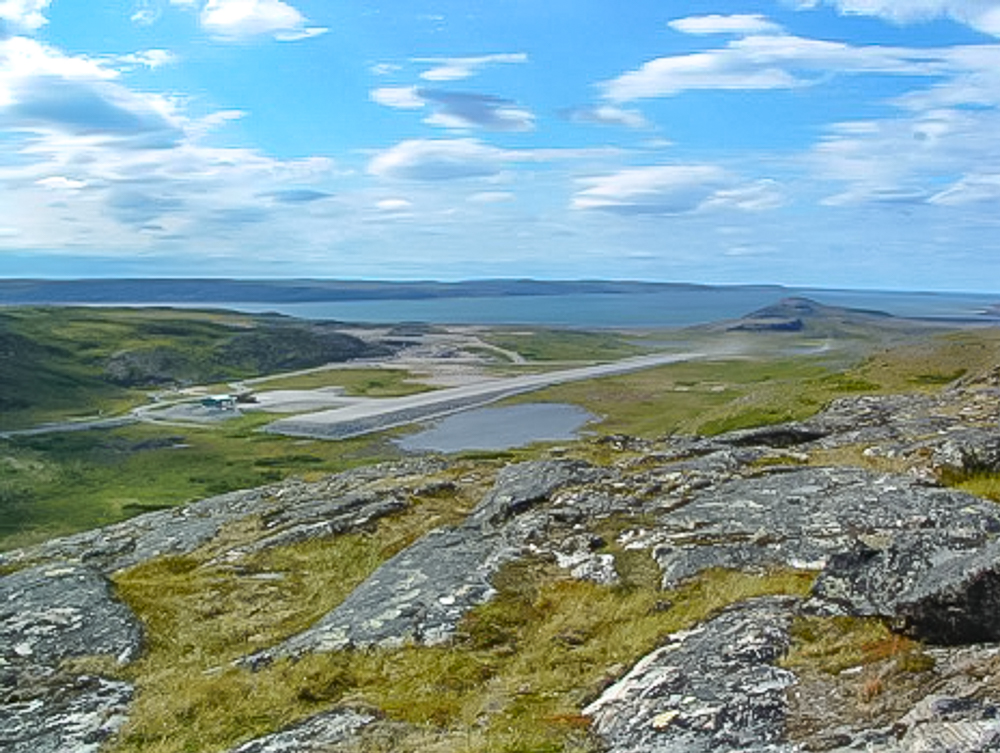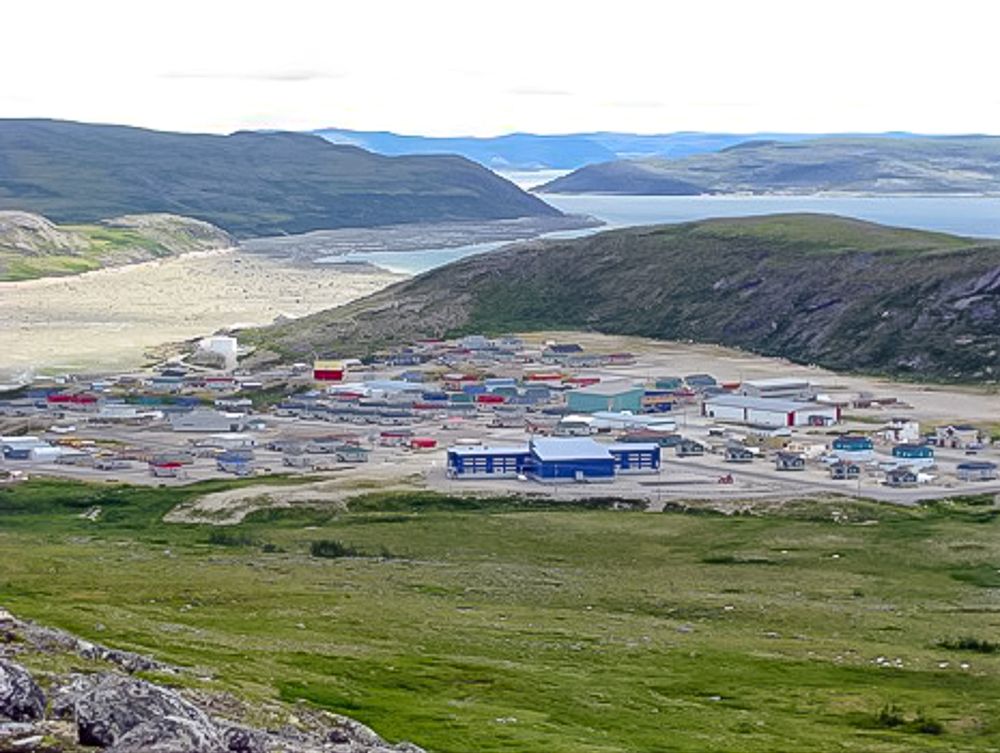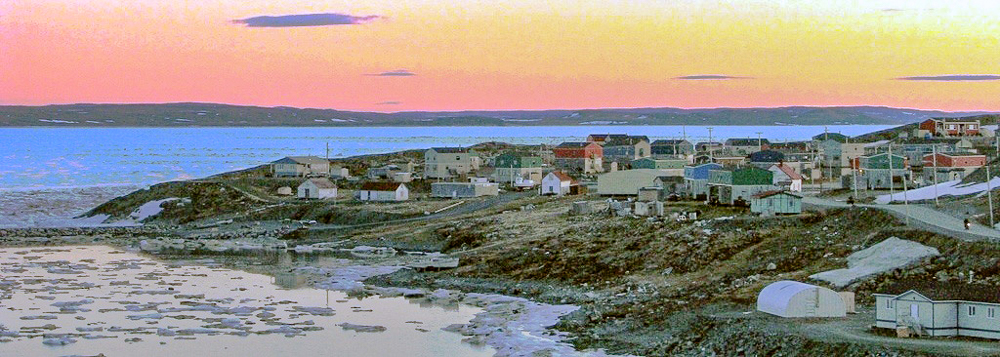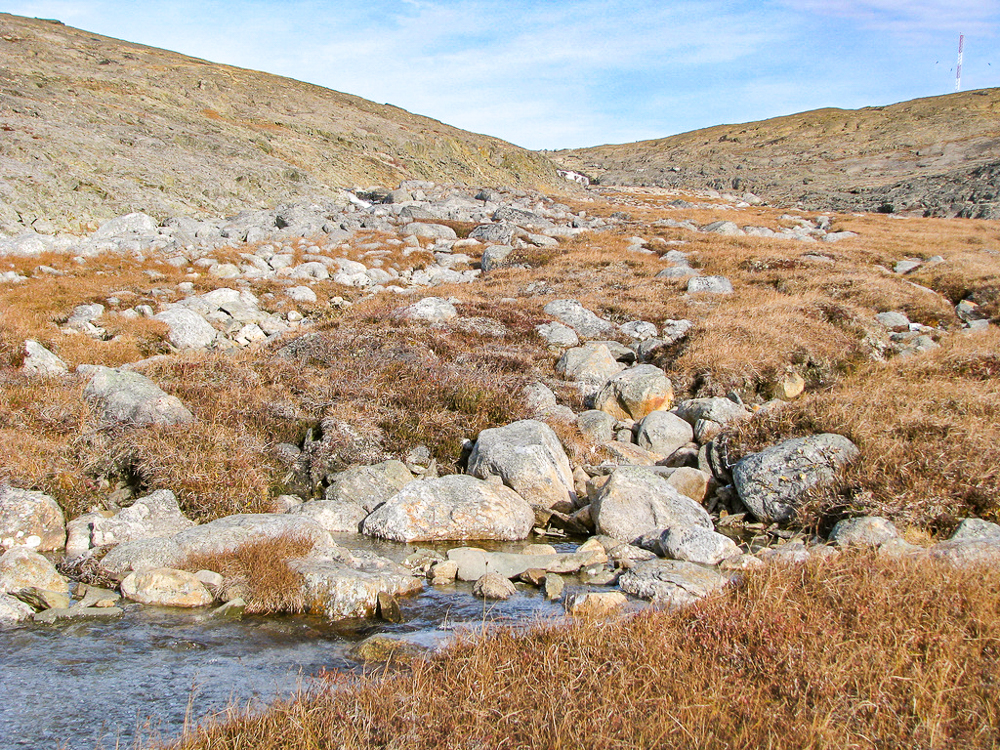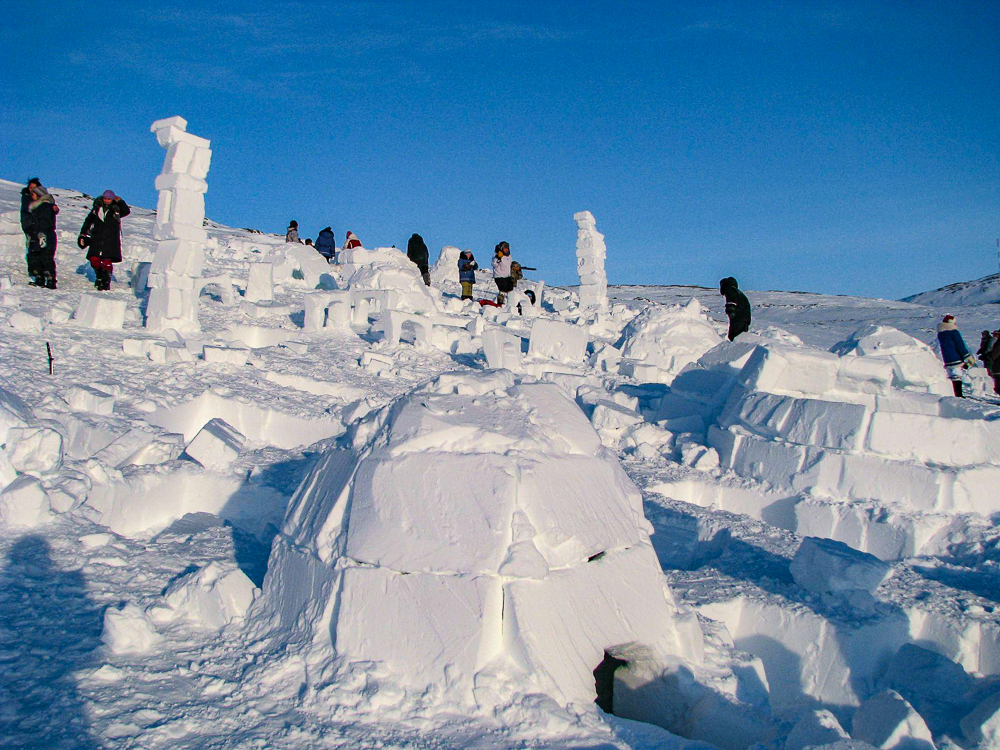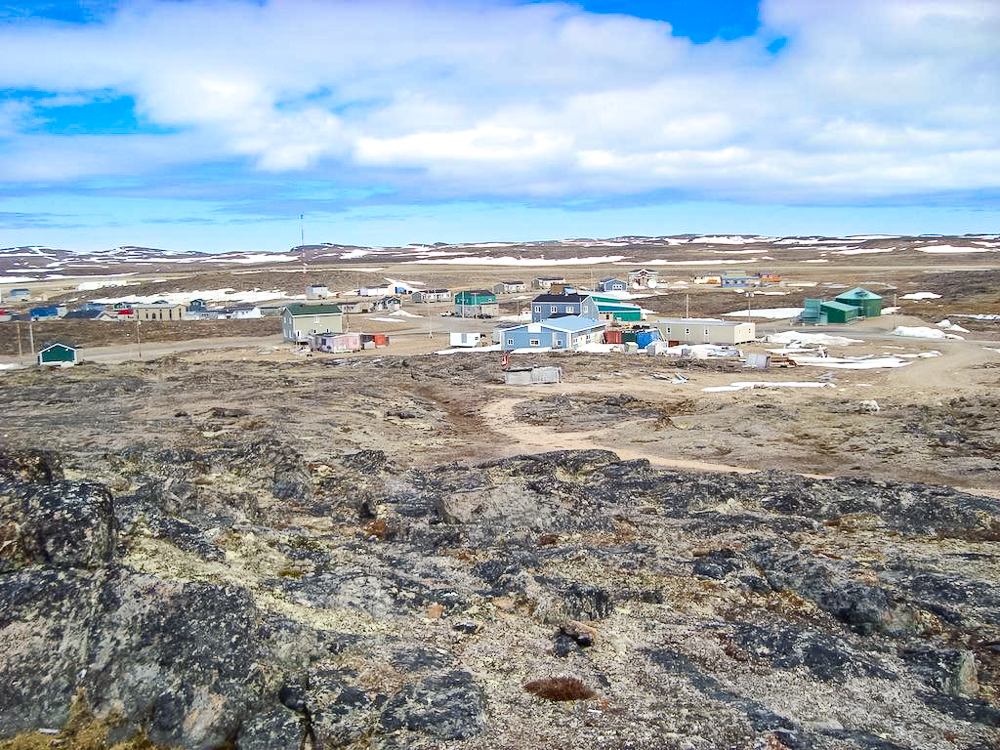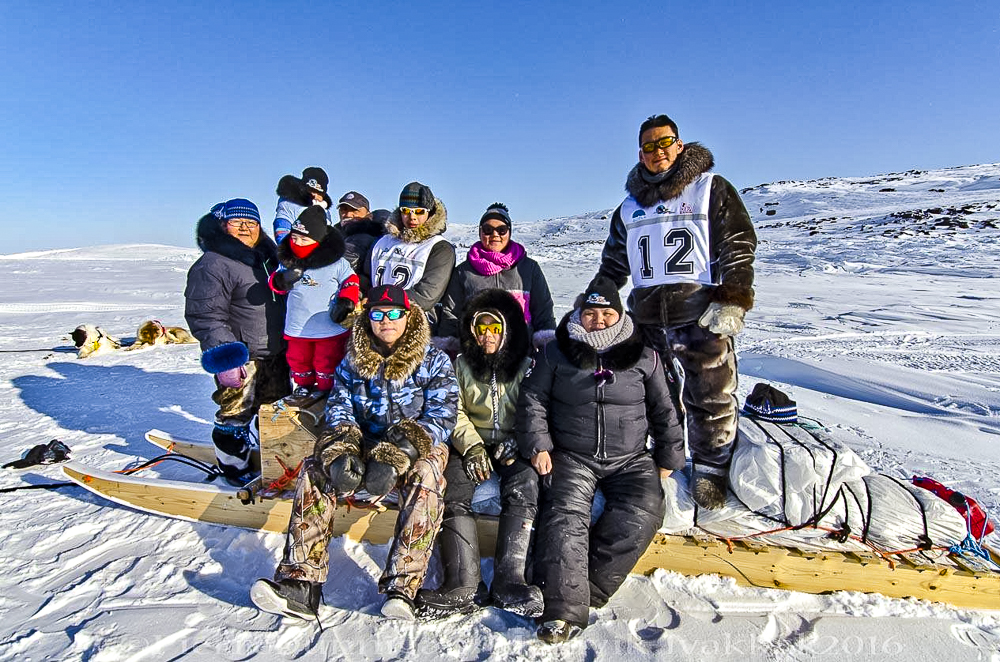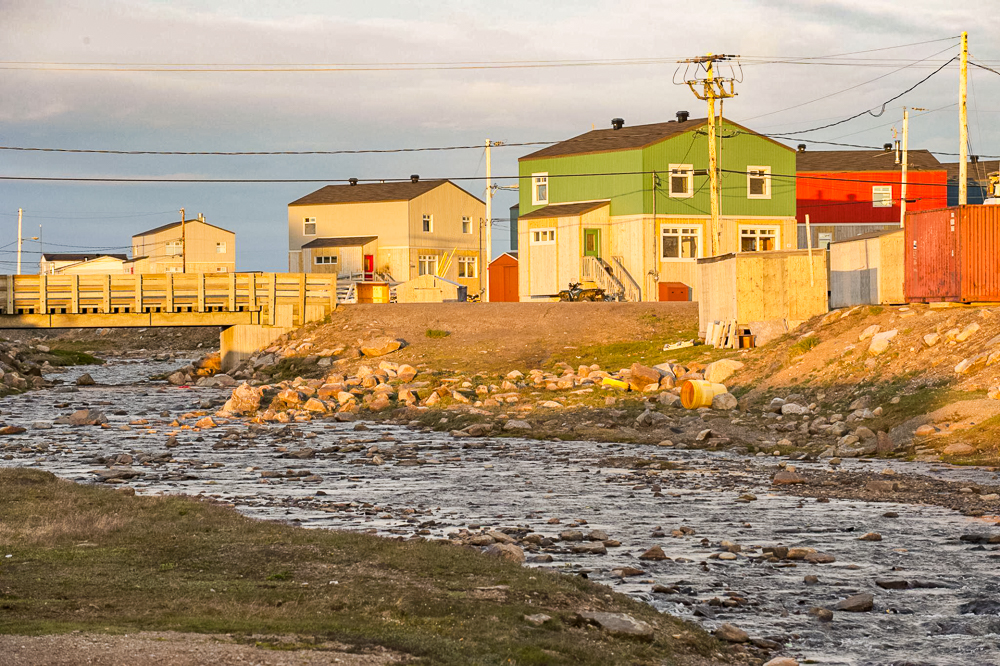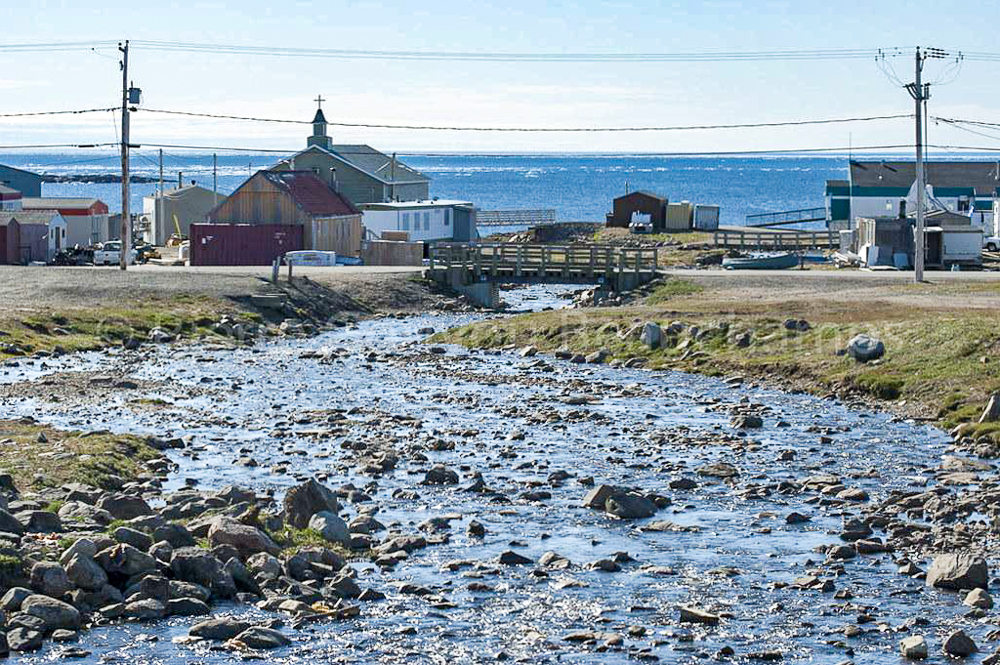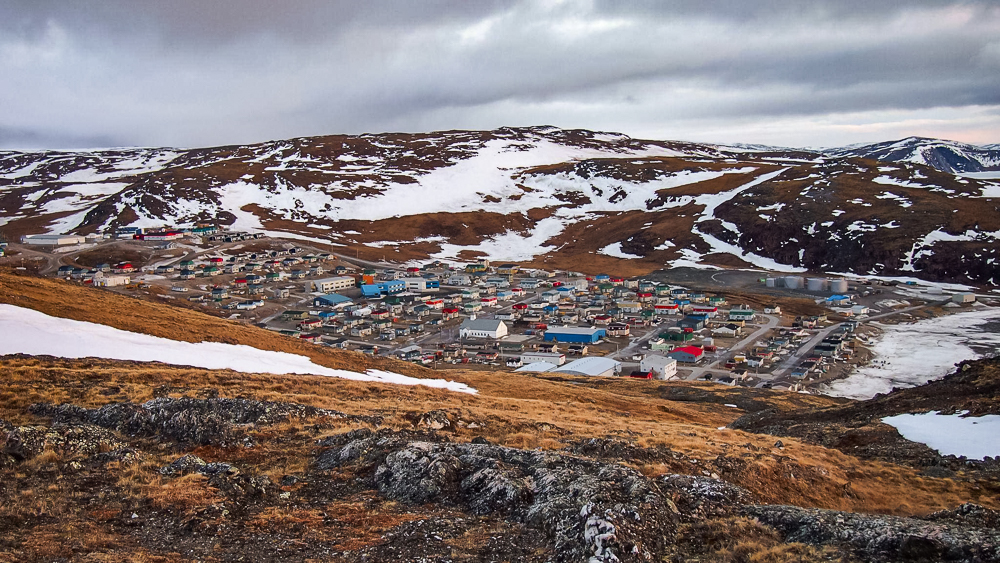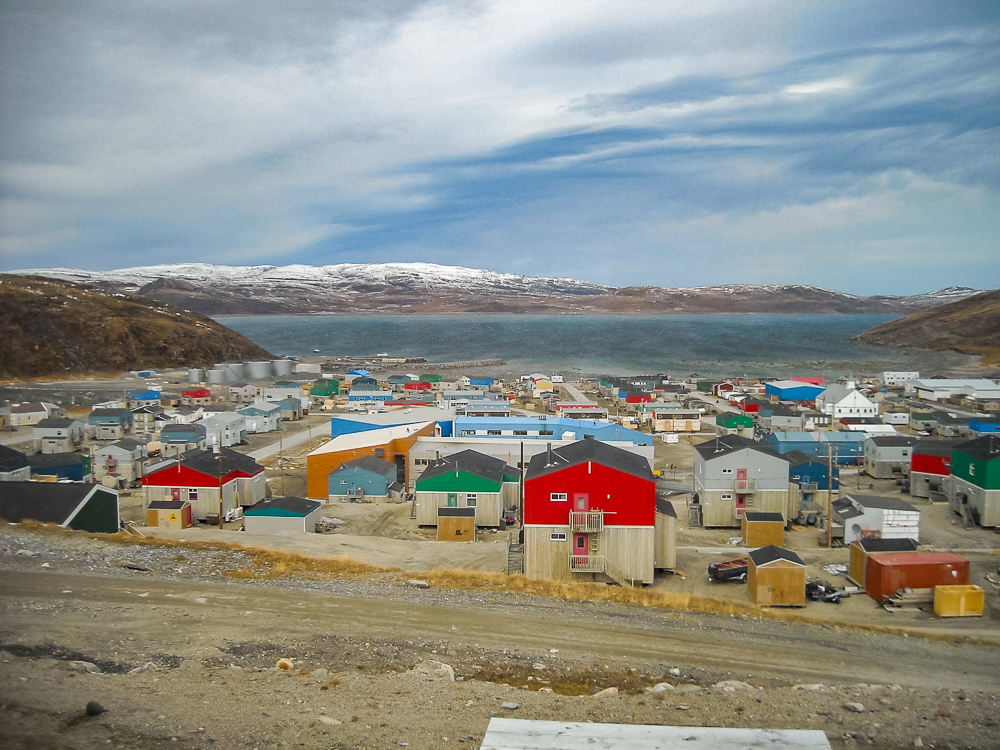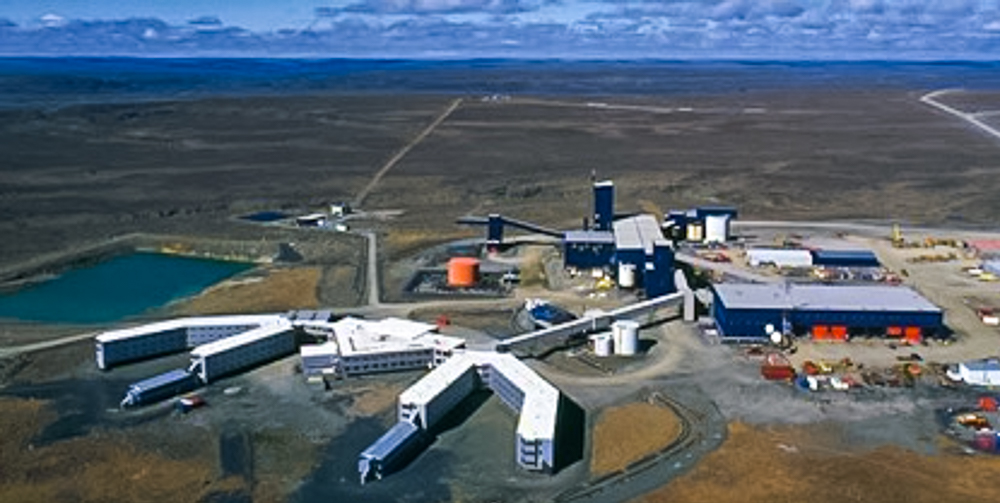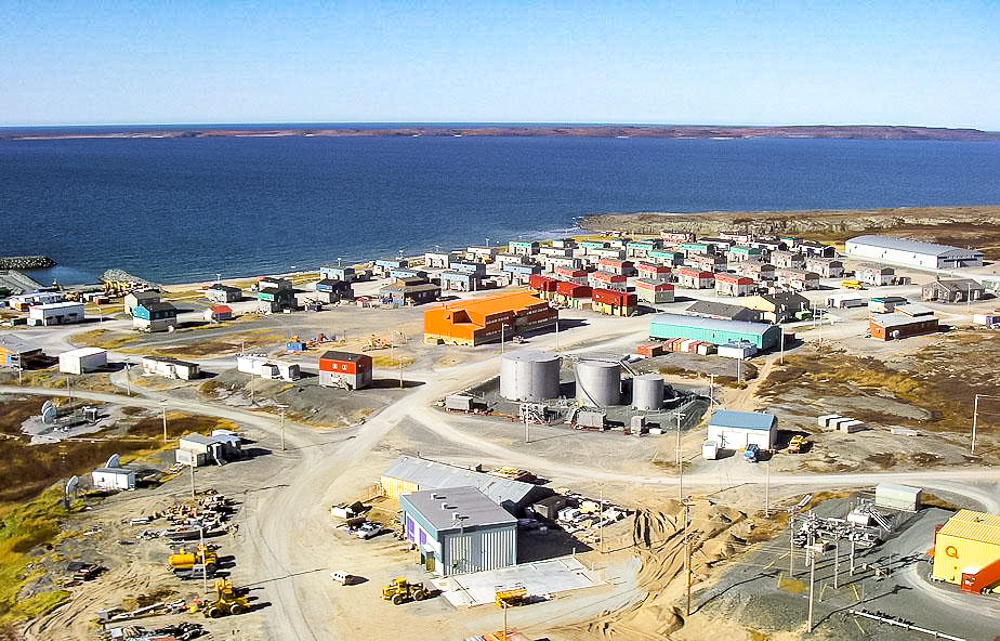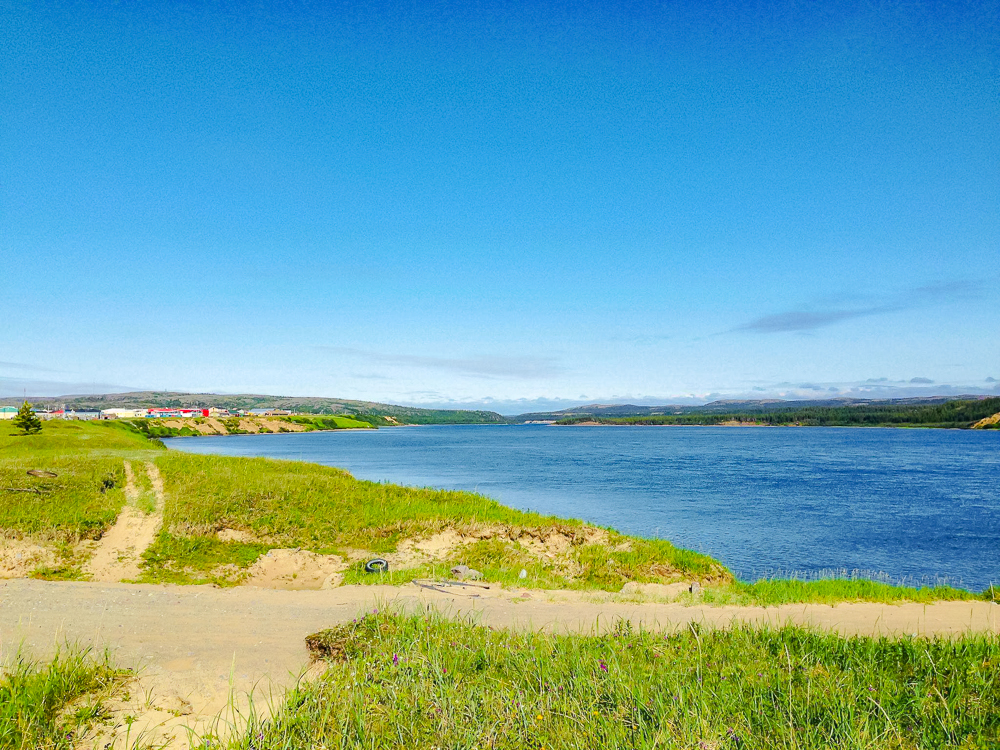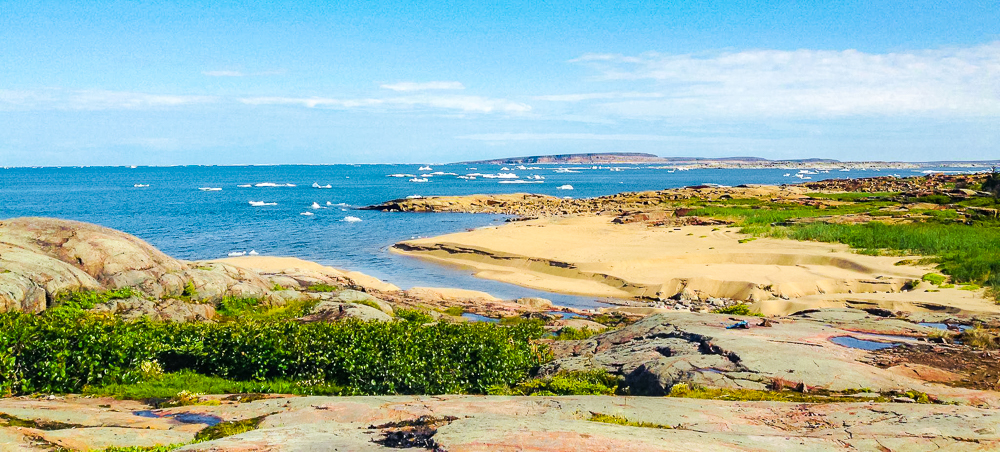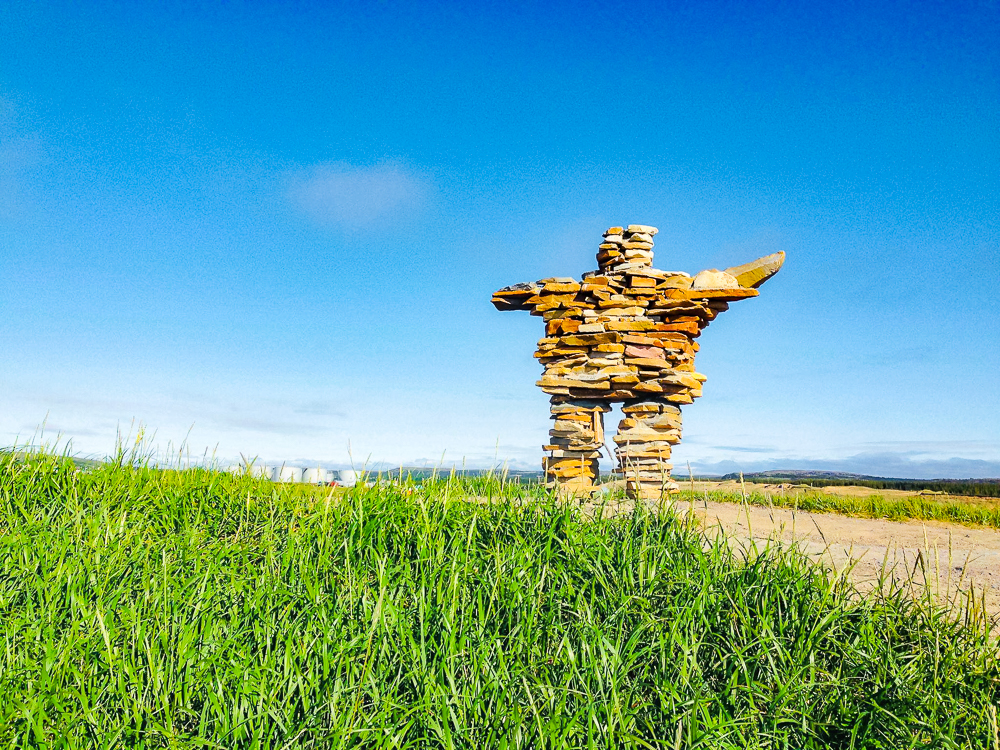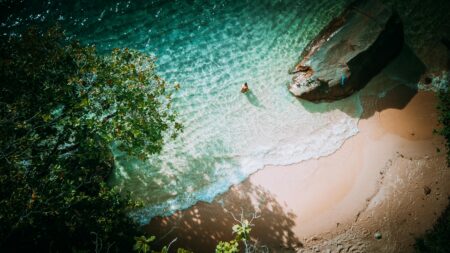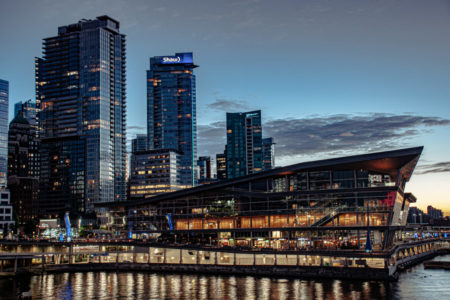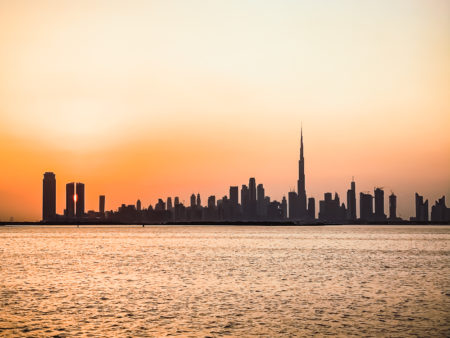Nunavik
Nunavik is an administrative region of Quebec that is located at the northern tip of the province. This vast territory constitutes more than a third of the total area of Quebec with some 443,684.71 km2. The total population is 13,188, 90% of whom are Inuit and the main language is Inuktitut.
Please note that Nunavik and Nunavut are two separate entities. Nunavut is a self-governing territory located North of Quebec, while Nunavik is an integral part of Quebec.
It should also be noted that Inuit and Innu refer to two different peoples, both residing in Quebec. Indeed, the Innu are Aboriginal people living mainly on the North Shore (Côte Nord) and north of Lac St-Jean.
In this article, we will first deal with Nunavik as a geographical entity by exploring some basic characteristics of this large territory. Next, we will look at the different means of transportation that allow us to access Nunavik.
Finally, we will draw a portrait of the fourteen communities in this little-known territory by focusing on their socio-demographic characteristics, their accommodation facilities and their main tourist attractions.
N.B.: Photo of the article: A beautiful sunset in Kuujjuaq – Photo credit Maxence Chavanne
A brief overview of Nunavik communities
Nunavik is made up of 14 communities bordering Hudson Bay and Ungava Bay. These villages are only accessible by air, as there are no roads to Nunavik.
Transportation between Nunavik communities is also done by plane. The supply is done in the same way except during the summer when a large cargo ship comes to supply each community.
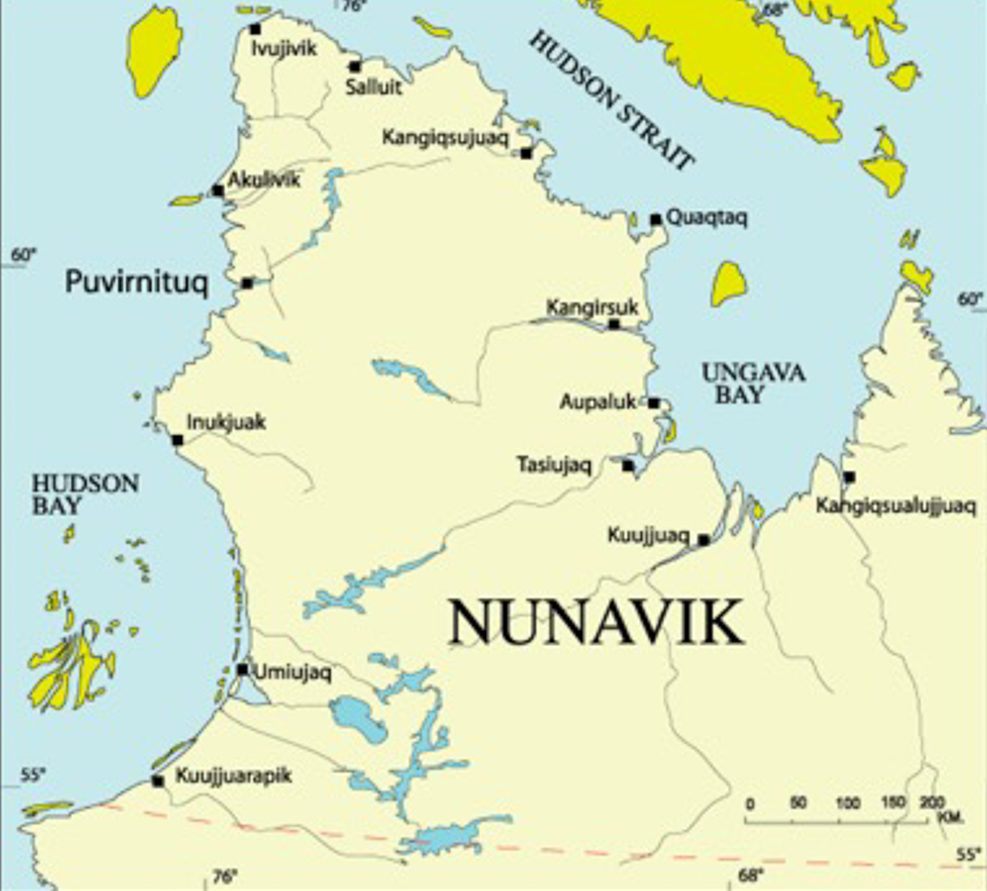
Nunavik can be divided into two distinct entities: the Ungava Bay and Hudson Bay communities. These are each made up of 7 villages.
Although the culture is similar, there are several distinctions, including the Inuktitut spoken (different dialects), local traditions and housing.
We will discuss the specificities of each of these 14 communities in the last section of this article.

Transportation
Travel from major urban centers
Transportation between Quebec’s major urban centers and Nunavik is made possible by two airlines, Canadian North and Air Inuit.
It should be noted, however, that both carriers offer limited routes and only a few destinations are available to Canadian travellers.
Here is a brief description of the proposed itineraries.
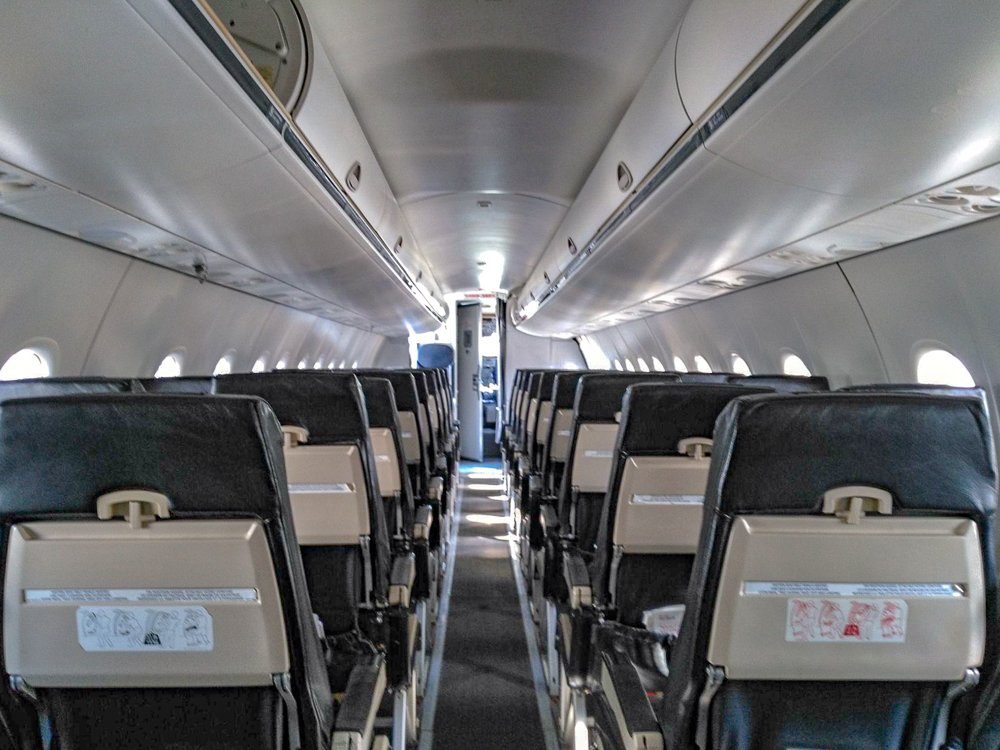
Canadian North
Canadian North only serves one destination in Nunavik, Kuujjuaq. Flights to Kuujjuaq all originate in Montreal and are available once a day, every day of the week.
The planes generally have a capacity of about 60 people. The duration of the flight is approximately two hours and twenty minutes.
Canadian North is an Aeroplan partner. It is therefore possible to use loyalty points to pay for your flight. The number of points required for a round-trip flight to Kuujjuaq can vary, but is generally between 15,000 and 20,000 Aeroplan points.
Here is a round trip ticket I was able to obtain for 15,000 Aeroplan points in September 2020. I only had to pay for the surcharge ($150.00) and taxes ($50.87).


Canadian North also has its own loyalty program called “Aurora Rewards“. It is possible for you to systematically earn Aurora and Aeroplan points when you travel in the North.
If the double accumulation of points seems attractive at first glance, it must be remembered that the Aurora program is first and foremost oriented towards travellers who frequently travel to northern Canadian destinations and that the promotions linked to the use of points are very specific (discounts on transportation between two Nunavut communities, redemption of points at local grocery stores found only in Nunavut, among others).
In our opinion, it is not necessary to join this rewards program if you are not a frequent traveler to the North.

Air Inuit
This airline offers flights to Nunavik through two major urban centers, Montreal and Quebec City. The aircraft used by Air Inuit can accommodate up to 60 people.
The final destinations from these two urban centres are as follows Kuujjuarapik, Puvirnituq and Kuujjuaq. However, there are some things to consider depending on the final destination chosen.
Kuujjuarapik
This Hudson Bay destination is only accessible by flight from Montreal. The duration of the flight is about two hours and has no stopover. It is interesting to note that you can also travel to this community throughAir Creebec, which provides transportation to the village of Whapmagoostui which shares the same land as Kuujjuarapik. However, this alternative will require several stopovers, notably in Chibougamau and Chisasibi.
Puvirnituq
This other Hudson Bay destination is only accessible by flight from Montreal. However, this flight has a short stopover in La Grande to refuel. The flight from Montreal to La Grande takes approximately one hour and forty-five minutes. The flight from La Grande to Puvirnituq takes about an hour and a half.
Kuujjuaq
Air Inuit serves the village of Kuujjuaq through Quebec City, as transportation from Montreal is already covered by Canadian North. The flight from Quebec City has a stopover in Schefferville. The flight from Quebec City to Schefferville takes approximately one hour and forty-five minutes. The trip between Schefferville and Kuujjuaq takes about an hour.
Unlike Canadian North, Air Inuit is not partnered with Aeroplan, which has a strong impact on the prices of the tickets offered… it can raise eyebrows.
Here are some simulations of one-way tickets for Montreal-Kuujjuarapik, Montreal-Puvirnituq and Quebec-Kuujjuaq.


Air Inuit’s reward program called “Isaruuk” is very restrictive and like Canadian North’s Aurora program, does not allow the accumulation of points to a large audience. Moreover, it takes a long time to accumulate the number of points needed to purchase an Air Inuit ticket.
As an indication, it takes more than 30,000 Isaruuk points to obtain a one-way ticket from Montreal to Puvirnituq. In my opinion, it is not necessary to join this program if you do not intend to travel regularly to Nunavik.
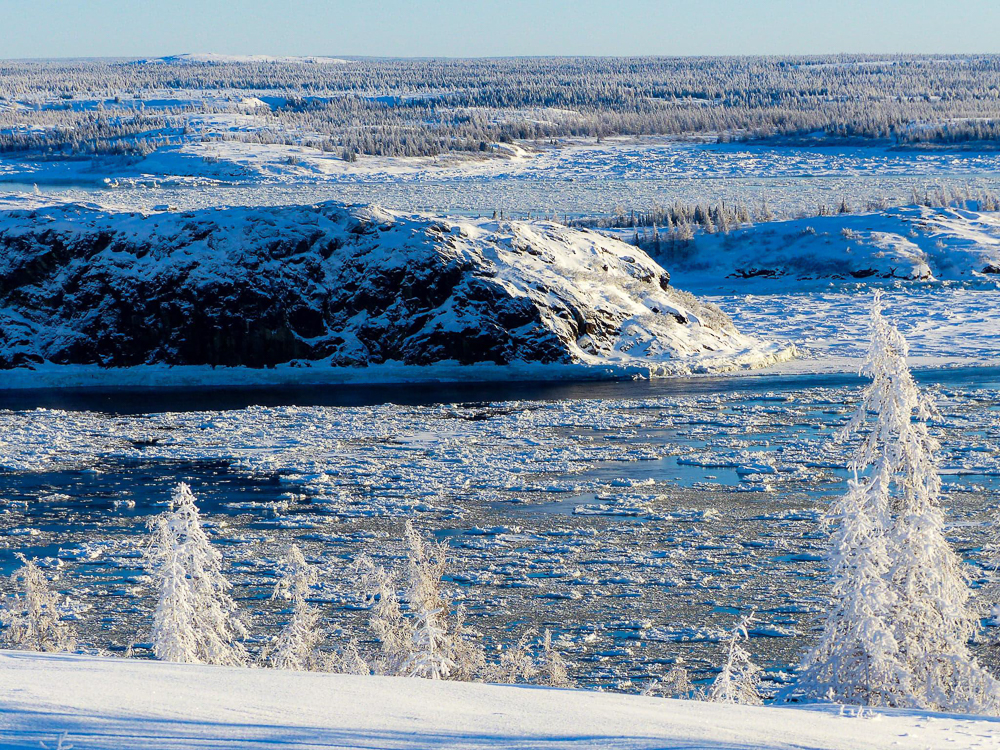
Here is a chart illustrating the accumulation of “Isaruuk” points according to the category of transport. It should be noted, however, that the program is currently undergoing a re-evaluation and that returns in terms of points will be reviewed in the coming months.

Travel between the northern communities of Nunavik
Transportation between the 14 communities of Nunavik is operated by Air Inuit and takes an average of 15 to 30 minutes between each community. The aircraft maximum capacity depends on several factors, such as the size of the community and the area served.
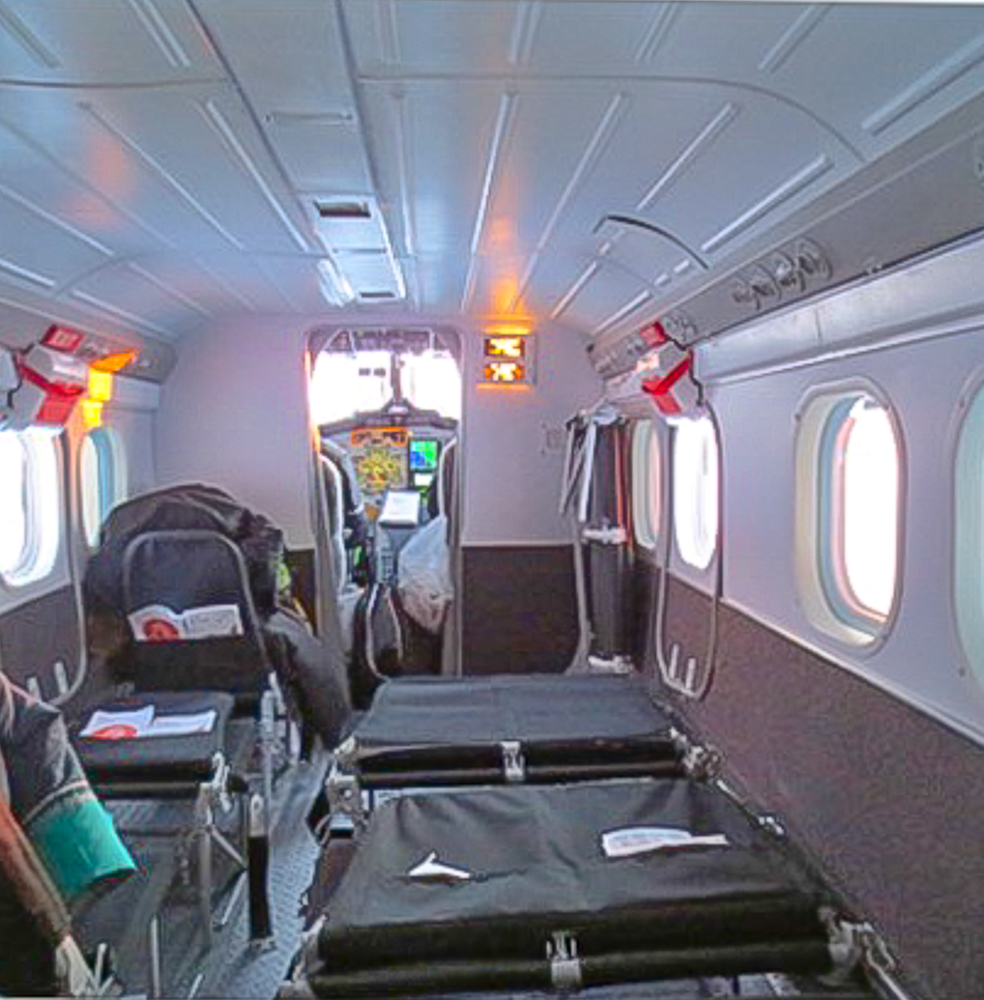
Thus, the vast majority of flights on the Hudson Bay offer a capacity of 60 passengers. The inter-village flights in Ungava Bay are very variable in terms of capacity.
Flights to Kangiqsualujjuaq, Kangirsuk, Quaqtaq and Kangiqsujuaq have a capacity of 40 to 60 passengers while flights to Aupaluk and Tasiujaq can accommodate 9 to 12 passengers!
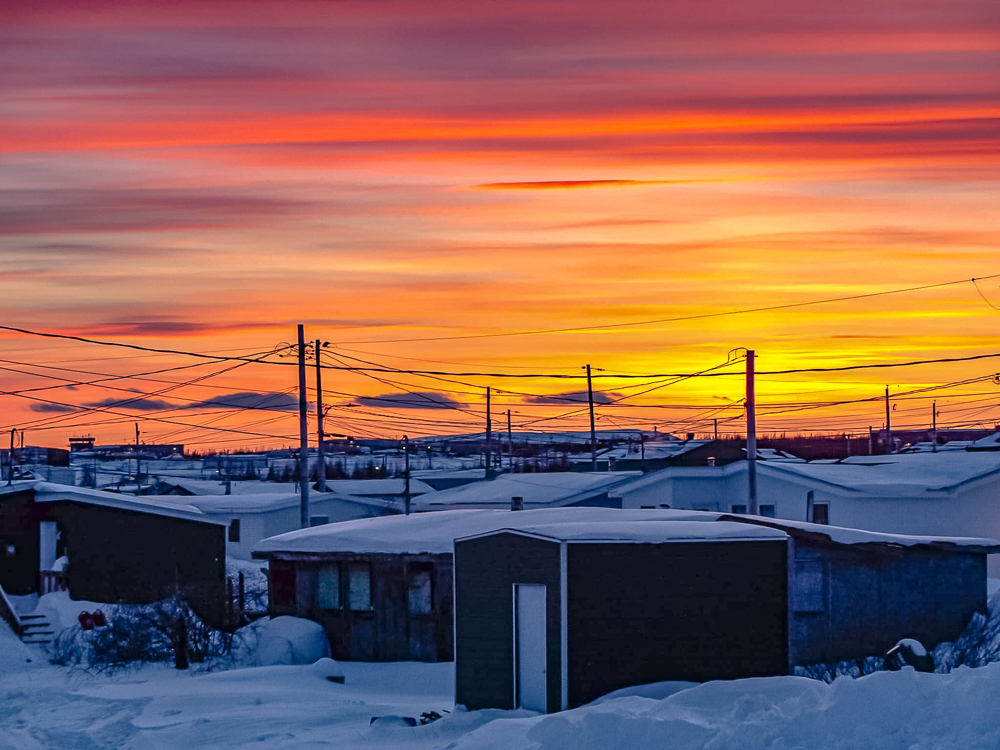
It is also important to note that these flights are often subject to delays and cancellations due to the changing weather patterns in this region. It is also not uncommon for it to take several days to reach your final destination.
As an indication, I once had to wait a week to reach my final destination because of a persistent “blizzard” and high winds that made transportation impossible.
Please note that Air Inuit will rebook your itinerary at no charge in the event of a similar “weather situation”.
However, accommodation will be at your expense, whereas it is only covered by Air Inuit if the cancellation of transportation is due to technical problems (mechanical problems in particular). For more information on Air Inuit’s delay, cancellation and refund policies, please refer to this link.
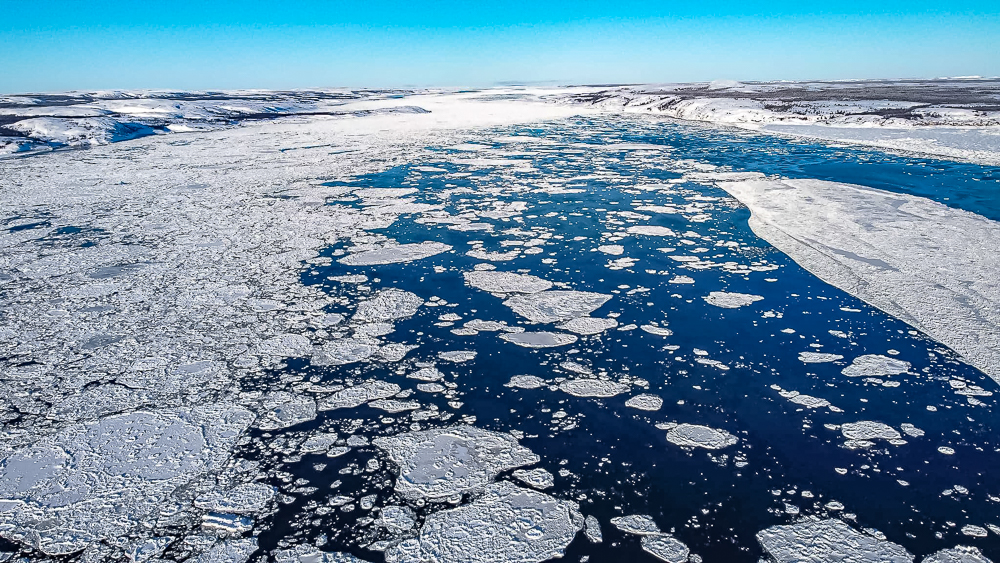
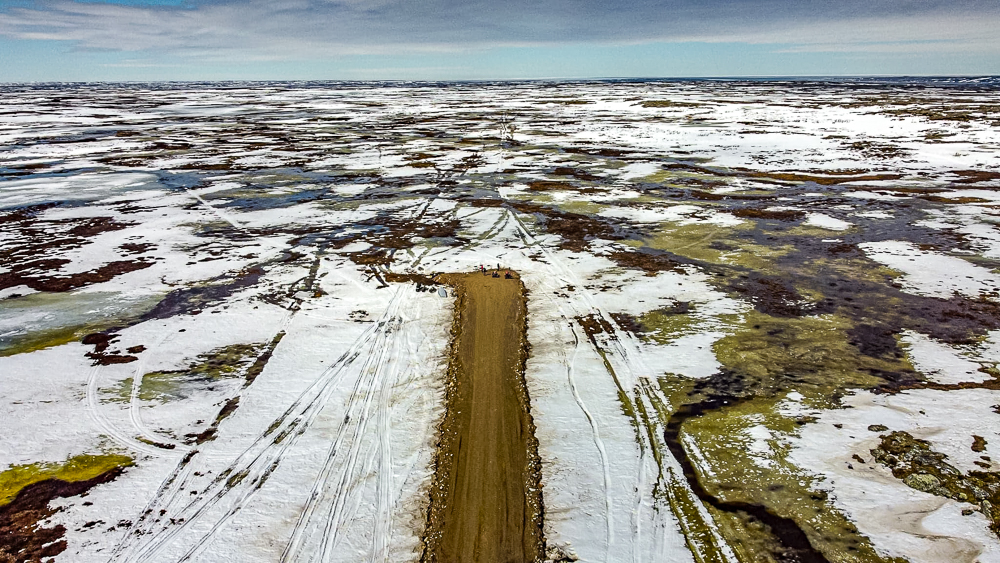
The 14 communities of Nunavik
In this section, I will review the different communities of Nunavik by looking at their socio-demographic profile, their main accommodations as well as their main tourist attractions.
This overview is subjective as it reflects my observations over the past six years, during which time I have had the opportunity to visit every community in Nunavik.
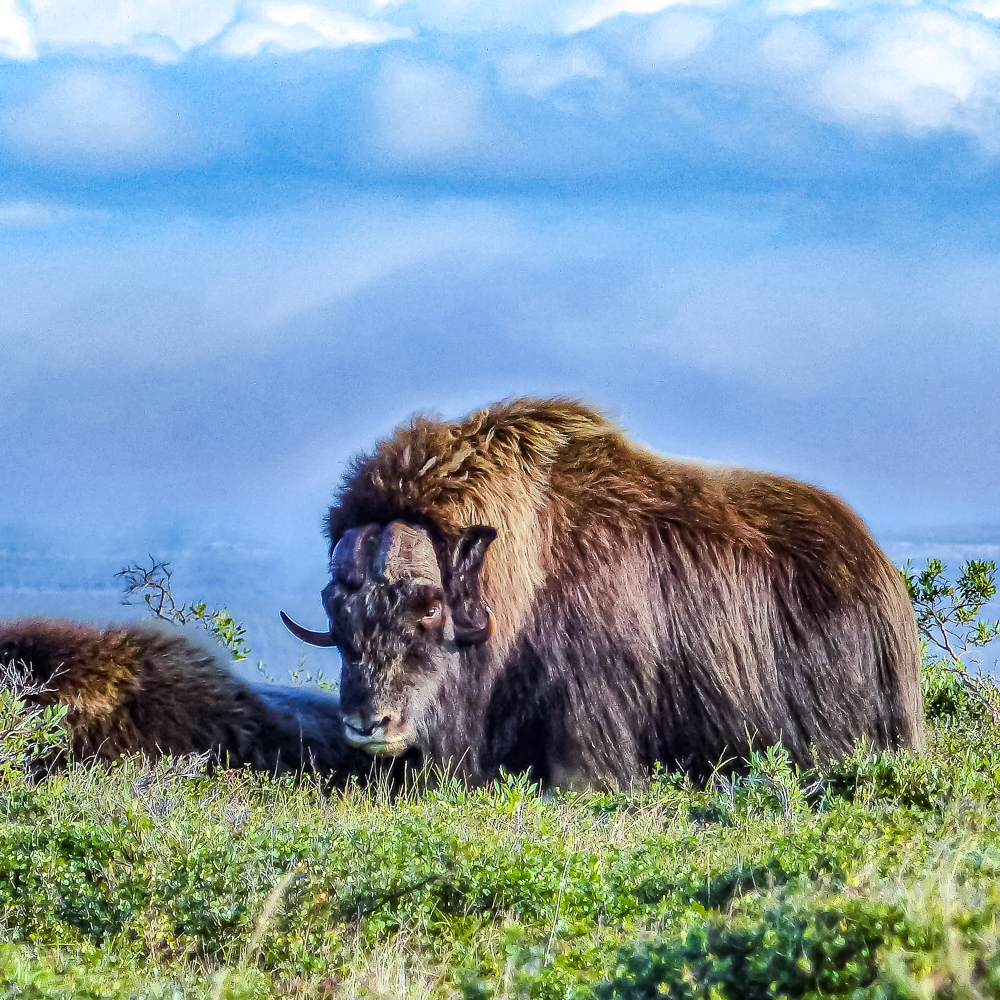
Without further ado, here is a more precise portrait of these communities that I have divided into two sections: the villages of Ungava Bay and those of Hudson Bay.
Spotlight on Ungava Bay
Kuujjuaq
Kuujuaq or “the big river” has a population of nearly 3,000 and is the economic center of Ungava Bay. It is also the political capital of Nunavik where various large organizations such as Makivik Corporation, the Kativik Ilisarniliriniq School Board and the Nunavik Regional Board of Health and Social Services have their headquarters.
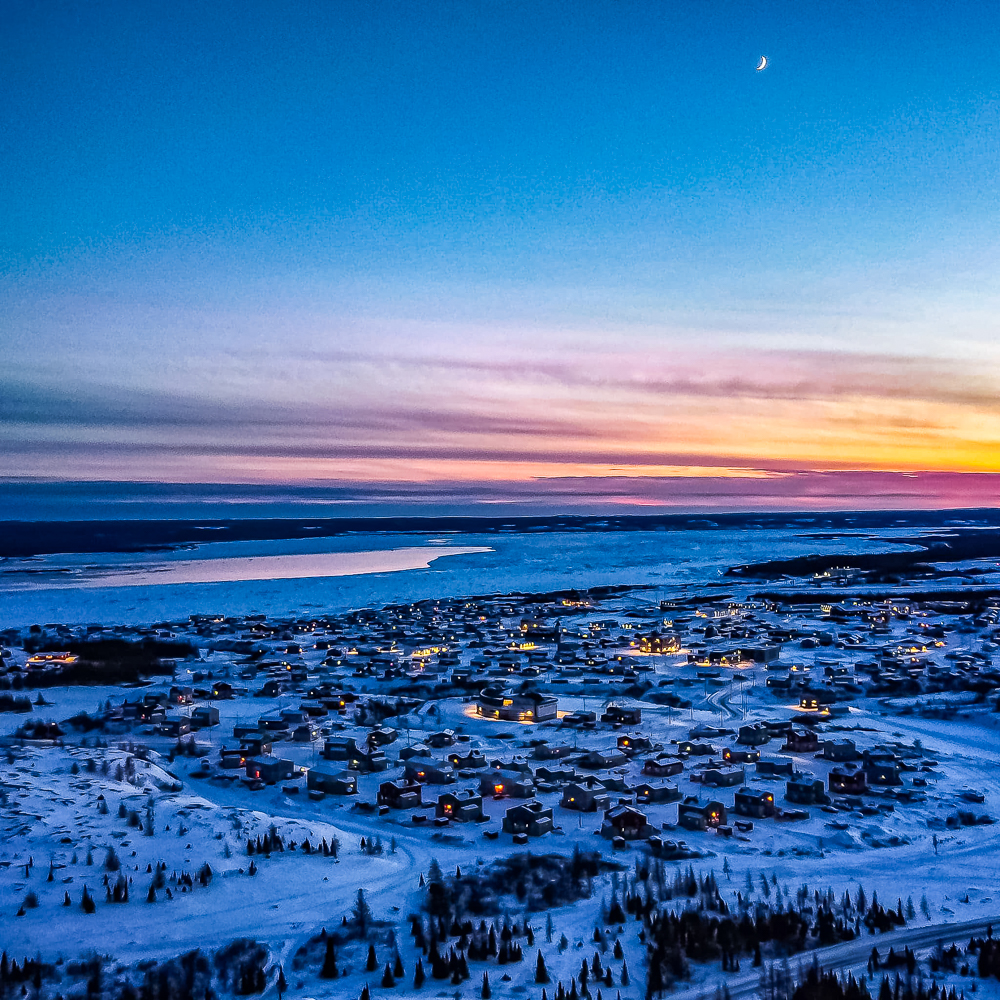
Accommodation
If you wish to stay in Kuujjuaq, you have three options.
- Kuujjuaq Inn : This is the main hotel in Kuujjuaq and offers hotel rooms starting at $235 per night. This establishment offers privileged access to a bar as well as a canteen-style restaurant. Note that capacity is currently limited due to COVID-19. You can also order food at the following restaurants: Gad’s Grill, Kuujjuaq Pizza Canteen and YVP Pub & Grill. Finally, you can get food at the local food co-op, the Newviq’vi and the Northern convenience store.
- Co-op Hotel : You can also stay at this accommodation that offers rooms starting at $195 per night. A communal kitchen is available to hotel occupants as well as a free cold lunch service. You can get food at the restaurants mentioned above or go to local grocery stores if you want to cook.
- Rooming in with workers : There are many health care workers and teachers who have housing with an unoccupied second bedroom. It is quite common (outside of the pandemic) to have an agreement with them and to sublet a room. These agreements can be made possible by joining the KuujJoue! facebook group which allows you to interact with Kuujjuaq residents.
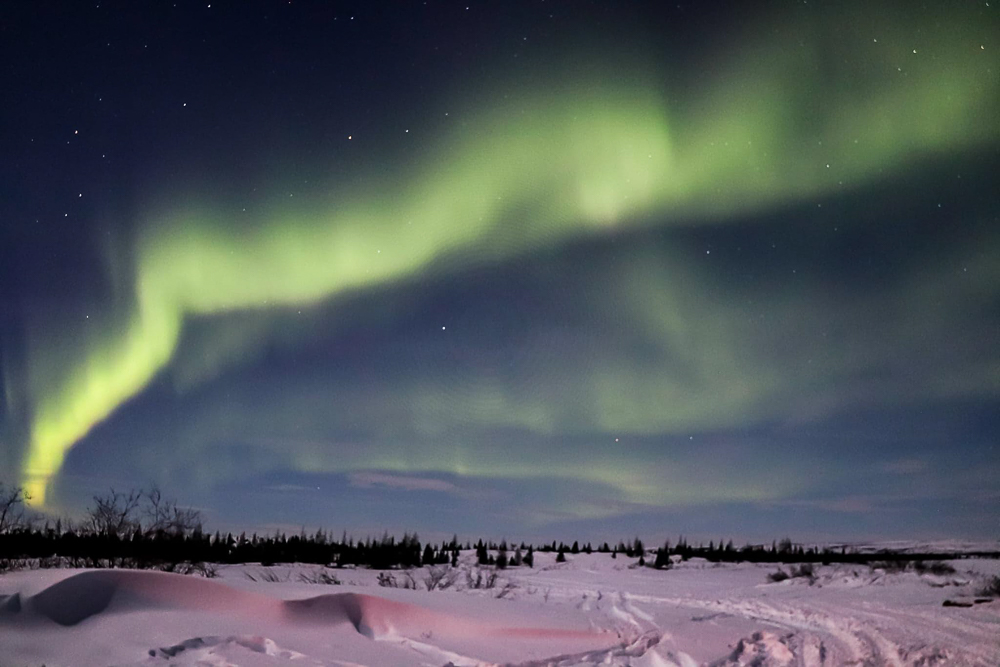
Main attractions
- Tivi Galleries : A visit to this store is a must as traditional Inuit products are on sale. You can find soapstone sculptures, sealskin mittens and earrings, among other things.
- Aqpik Jam : This is a music festival with a large number of First Nations and Inuit singers that takes place in August of each year. A very interesting cultural experience that will introduce you to native throat singing and other musical performances.
- Fishing trip to Tunulik II camp : A very different experience that will allow you to fish for speckled trout and bull trout.
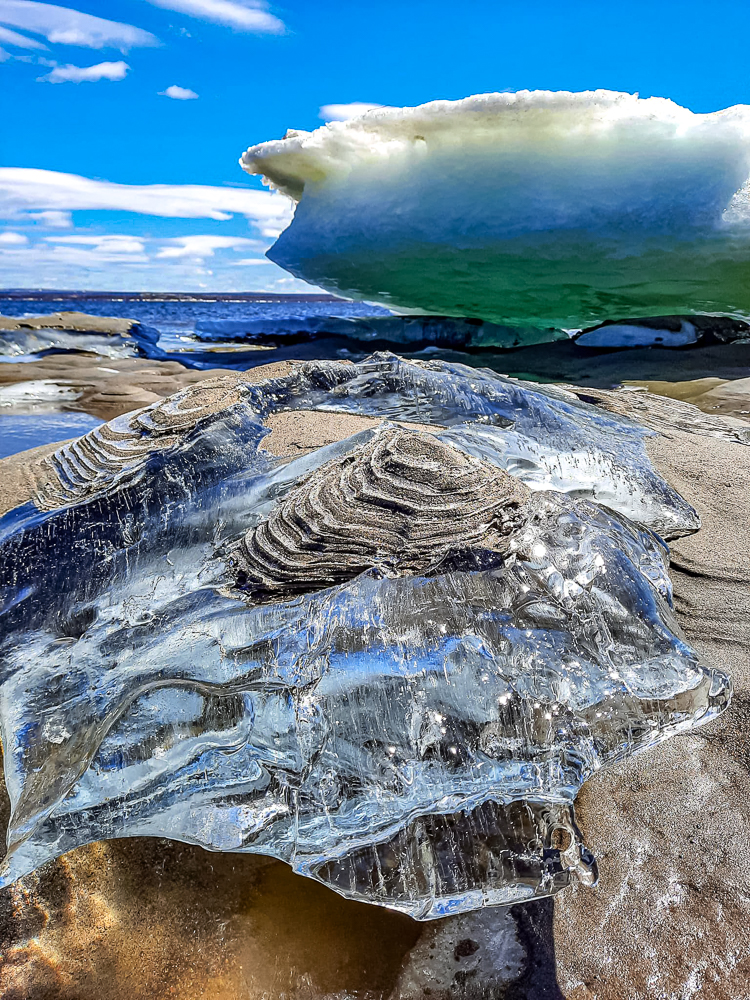
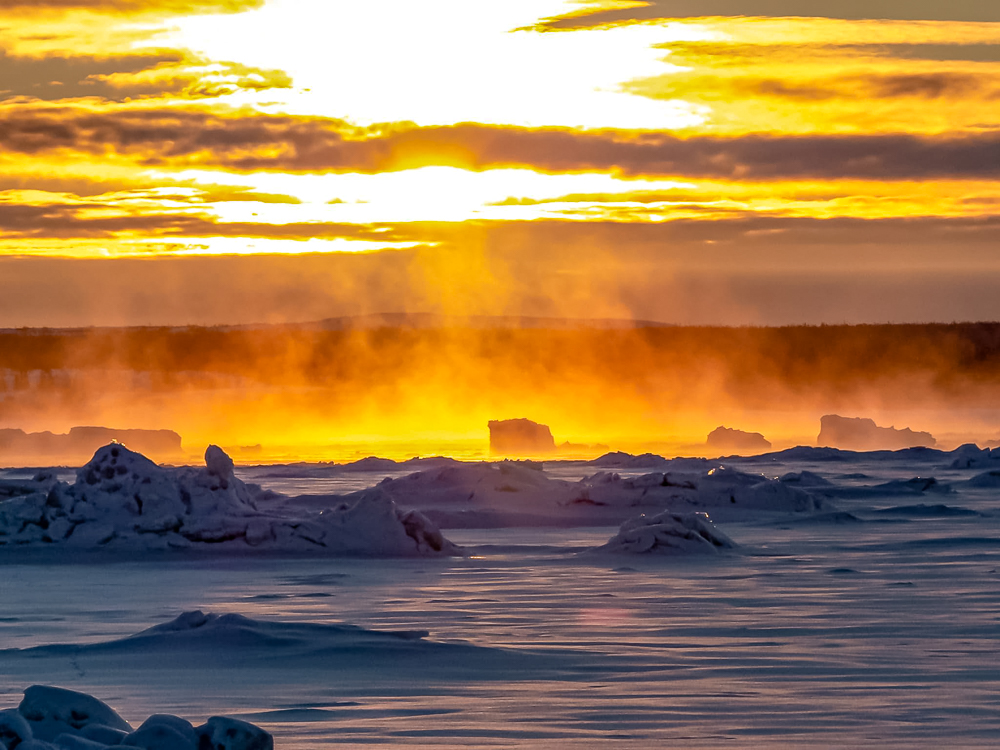
Kangiqsualujjuaq
Kangiqsualujjuaq or George River has a population of over 1,000 and the meaning of its name is “The Very Big Bay”. This community is located close to Labrador and shares strong ties with the three Inuit communities of this province: Nain, Hopedale and Makkovik.
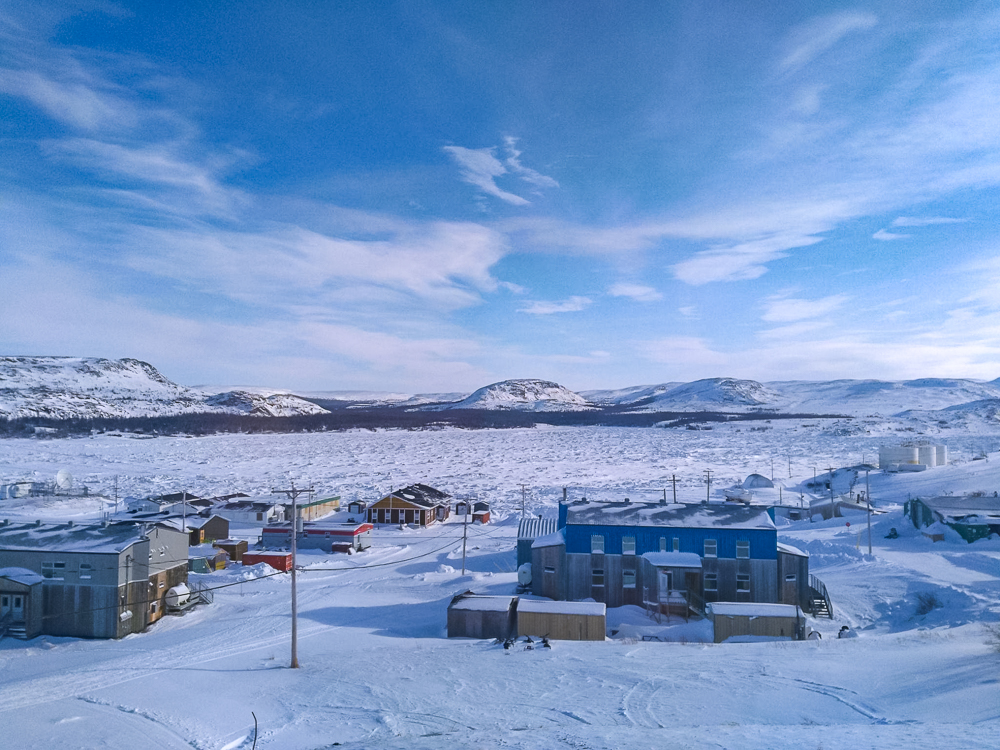
Accommodation
If you wish to stay in Kangiqsualujjuaq, you have the option of staying at the Co-op Hotel. Room rates start at $195 per night. A collective kitchen is at your disposal as well as access to Niriviapik, a takeout style restaurant open on weekdays.
Main attractions
- Kuururjuaq National Park : This majestic park provides access to the Torngat Mountains and its most breathtaking peak, Mount Iberville, which towers 1,646 meters above the surrounding land! A destination of choice for lovers of walking and picturesque views.
- Ulittaniujalik National Park : This national park will satisfy wildlife exploration enthusiasts as numerous caribou herds can be observed here. More than that, it is a great place for canoeing, kayaking and rafting. Indeed, the George River has many “rapids” that will satisfy thrill seekers.
- Fly fishing in the George River: This is the activity of choice for all sport fishing enthusiasts. Trout and lake trout are found in this stream.

Tasiujaq
Tasiujaq, or the lake-like water body, has about 400 inhabitants. It is the second smallest community in Nunavik after Aupaluk. Interestingly, the village is located just north of the tree line in Quebec.
Accommodation
If you want to stay in Tasiujaq, you have the option of staying at the Iqaluppik Hotel. The cost for one night is $195. There is no community kitchen or restaurant in this facility. Food can be purchased at the local co-op.
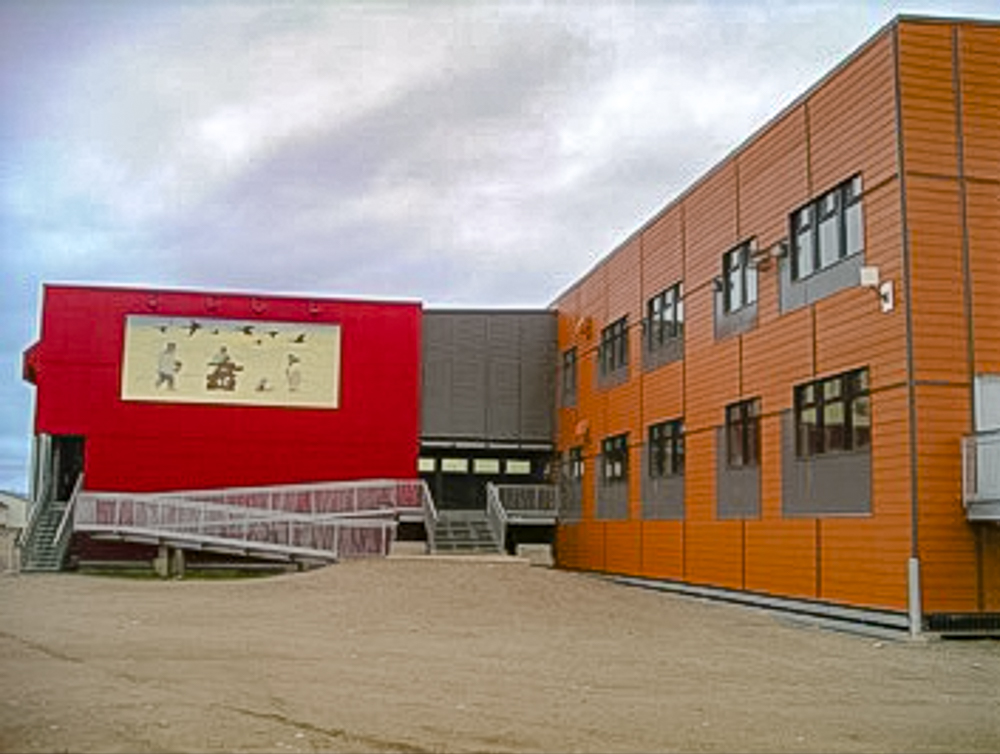
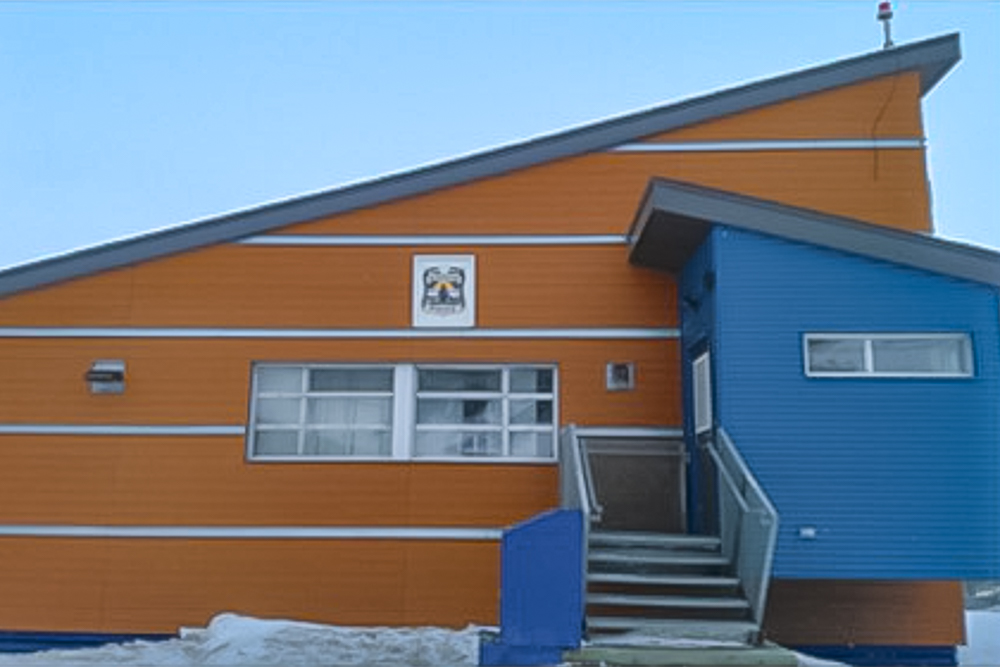
Main attractions
- The tides of the Leaf River Basin : Tasiujaq is home to the highest tides in the world. Indeed, it has been observed that these tides could reach 8 meters in the Leaf River estuary. A very interesting attraction that is located near the village.
- Observation of caribou herds : It is very easy to observe the movements of the caribou, as the village of Tasiujaq is located in the heart of their migratory path in the spring. Funny thing is that I once had to stop my car completely in the middle of the street to let a herd of 20 caribous pass.
- Hunting and fishing : The territory around this village is rich in caribou, wild geese, speckled trout and beluga whales. It is possible to go hunting and fishing on this vast territory, but always in the presence of Inuit. In this regard, it is important to note that the right to hunt and fish is reserved for Inuit residents.
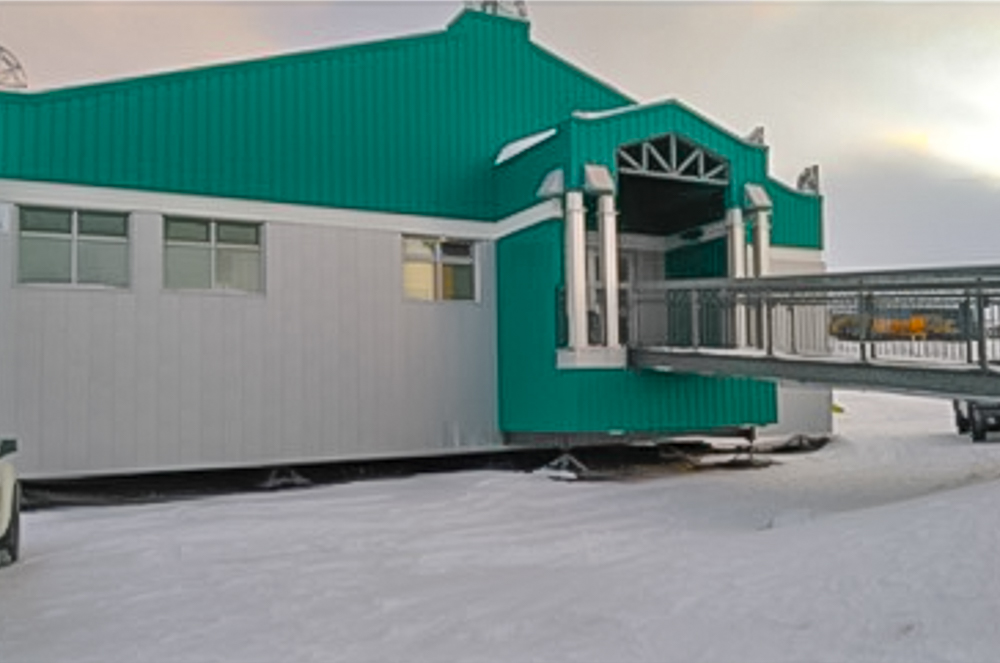
Aupaluk
Aupaluk or “Where the earth is red”, has 200 inhabitants. It is the smallest village in Nunavik. It should be noted that the establishment of this new village is very recent, while its official incorporation in Nunavik dates only from 1981.
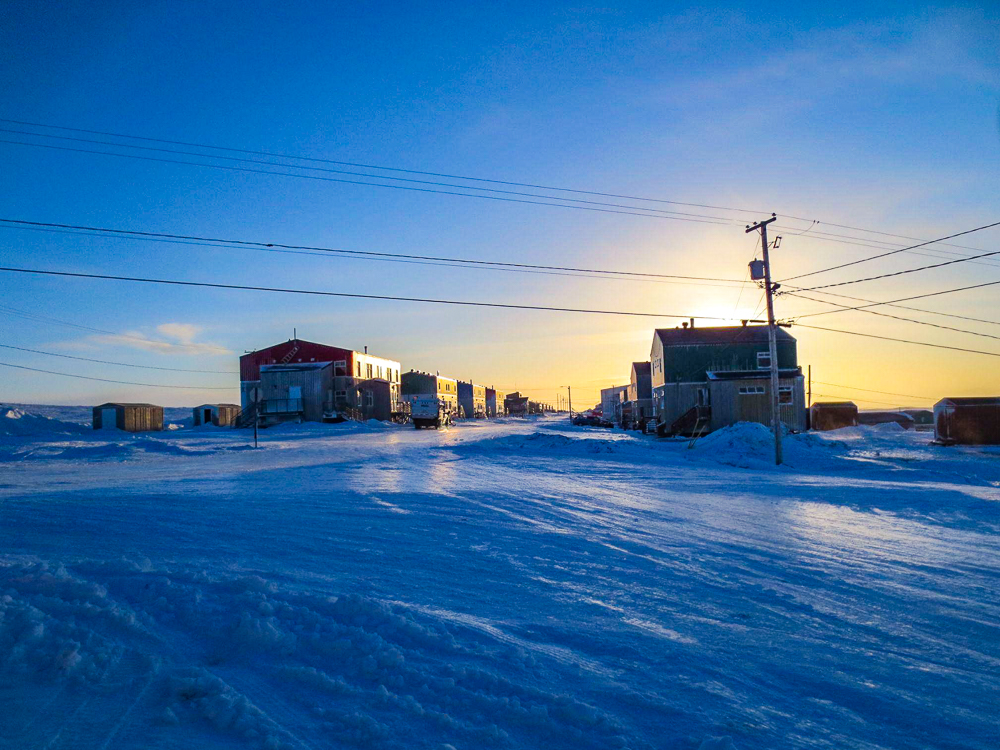
Accommodation
If you wish to stay in Aupaluk, you have the option of staying at a co-op hotel. Room rates start at $195 per night. A collective kitchen is at your disposal. There are no restaurants in Aupaluk. However, you have the option of purchasing food from the local food co-op.
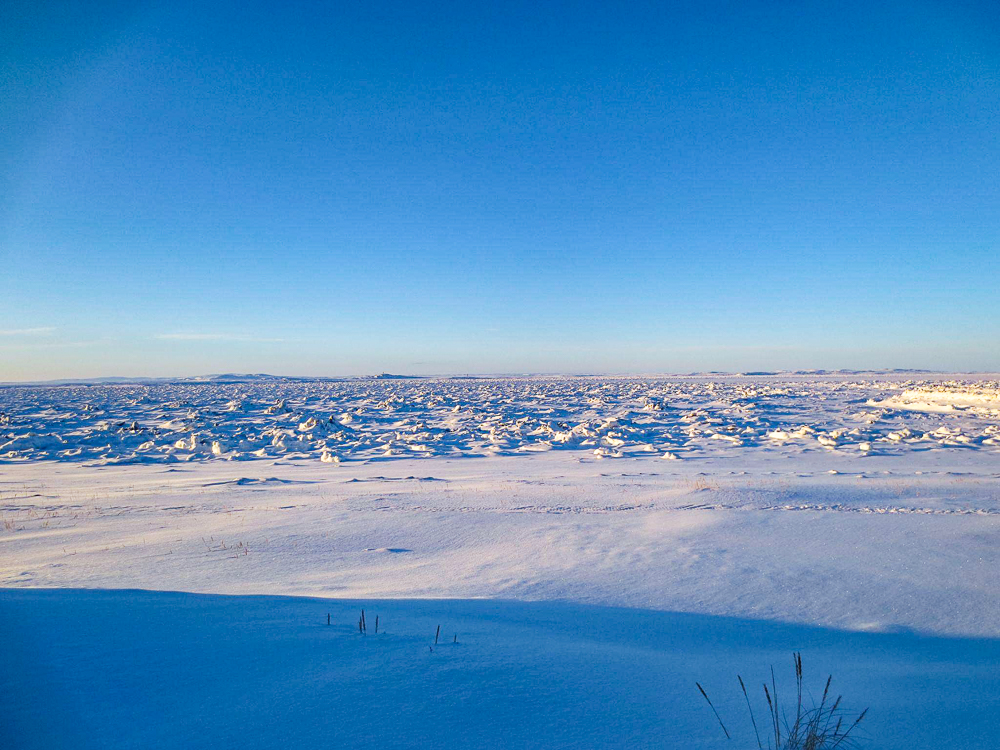
Main attractions
- The “Old Aupaluk” : It is interesting to visit the camps and remains of the Old Aupaluk where many Inuit used to live. This place is rich in history and offers a superb view of the Ungava Bay.
- Trout fishing : There are several small freshwater lakes on the outskirts of the village that are rich in fish. You could get there with a local guide in less than thirty minutes. Be careful, however, it is recommended that you go there with an anti-mosquito net in summer, because mosquitoes are voracious!
- Wildlife viewing : Like Tasiuajq, it is very easy to observe the movements of the caribou, as Aupaluk is located in the heart of their migratory path. Wild geese and beluga whales can also be observed.


Kangirsuk
Kangirsuk or “The Bay” has about 600 inhabitants. This high altitude village is surrounded by several rock walls and is located on the north shore of the Arnaud River.
Accommodation
If you want to stay in Kangirsuk, you have the option of staying at the Co-op hotel. The cost for one night is $195. A collective kitchen is available. There are no restaurants in this community. However, it is possible to purchase food at the local community co-op.
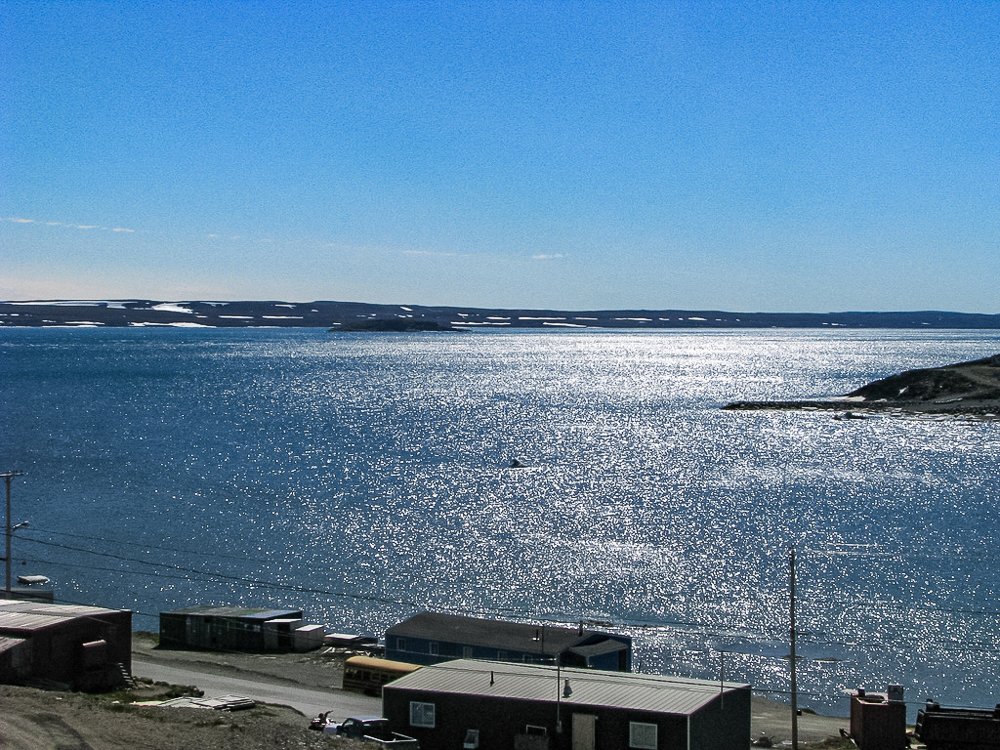
Main attractions
- Payne River Fishing Camp : A unique experience where you can go fishing for Arctic char, a very tasty orange-coloured fish similar to salmon. You will also have access to a fishing camp with most essential amenities (hot water, toilets, meals and satellite phone). Please note that this camp is temporarily closed due to the current health crisis
- Fresh mussel harvesting : The Arnaud River gives rise to a back and forth of huge tides. It is possible to collect fresh mussels on the rocky walls of the river when the tide is low. You can then taste them. A rich gastronomic experience!
- Exploring archaeological sites : You can visit the remains of Pamiok Island a few hours from Kangirsuk. That’s where you can find the vestiges of a stone house having belonged to the Vikings. A historical visit that can be interesting.
Quaqtaq
Quaqtaq or “the place that looks like an intestinal worm” has about 500 inhabitants. This community is the birthplace of Inuit singer Beatrice Deer. The village is located on the eastern shore of Diana Bay.
Accommodation
Quaqtaq has two lodging places, the co-op hotel and theTuvaaluk hotel. These two places cost $195 for a night’s stay. A collective kitchen is available to tourists. However, there is no restaurant, so you have to go to the village’s food cooperative
Main attractions
- The Akpatok Islands : This is a privileged place to observe polar bears and walruses. It is also important to specify that polar bears are often seen near the village. As an indication, I was once able to observe a polar bear from my hotel room which was less than 30 meters from me. Quite differant than the Granby zoo!
- Visits to archaeological sites : There are several archaeological sites near Quaqtaq. Among other things, there are remains of Inuit ancestors, the Thule. There are also some objects dating back more than 3,500 years. It is a very pleasant and enriching visit.
- The municipal pool : Quaqtaq is one of only two communities with an indoor pool. What’s more, it is heated. This is a real point of pride for this small community.
Kangiqsujuaq
Kangiqsujuaq or Wakeham Bay has a population of about 1,000. The meaning of its name is “The Great Bay”. This picturesque village is located 1km south of the Hudson Strait and at the mouth of Wakeham Bay.
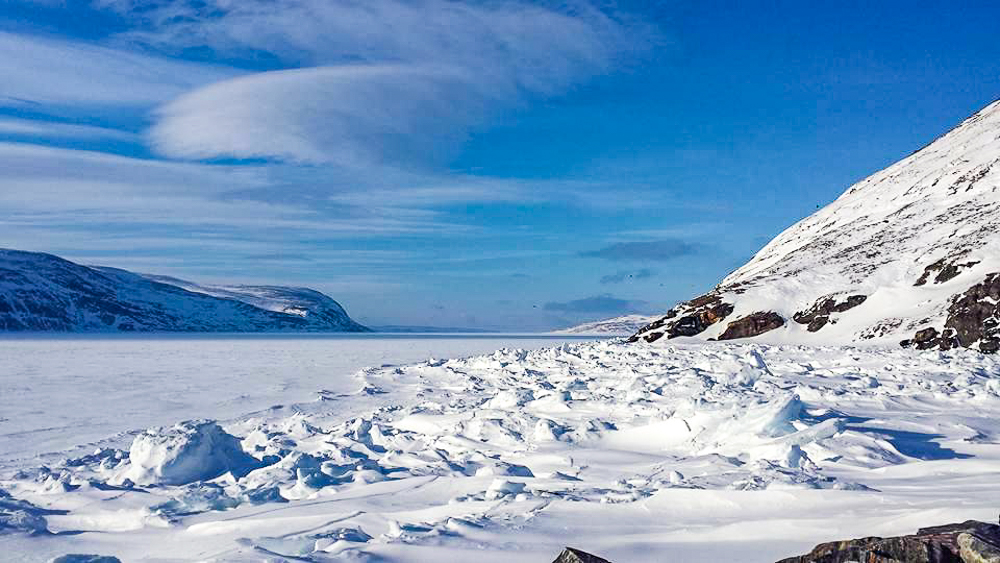
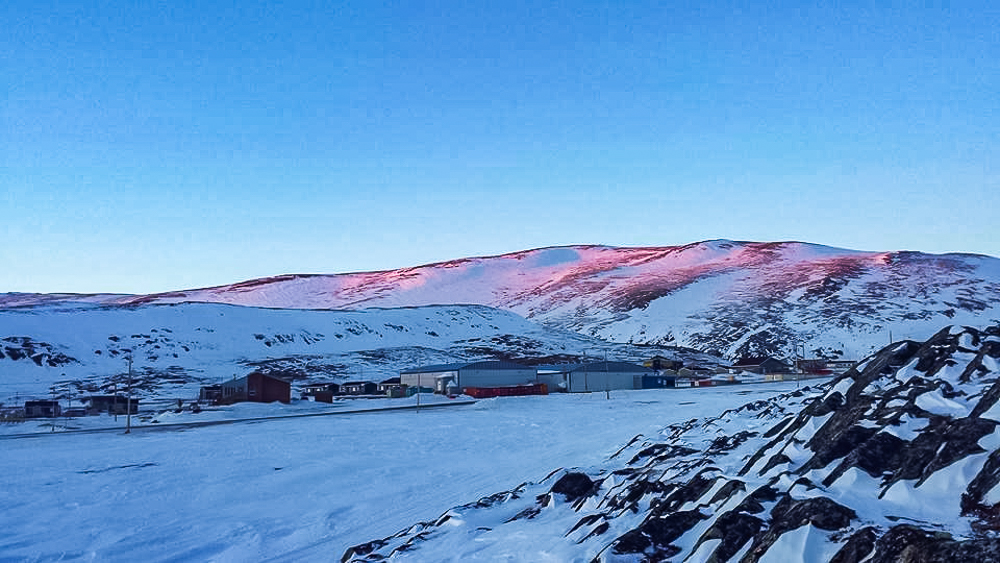
Accommodation
- Co-op hotel : You can also stay at this accommodation that offers rooms starting at $295 per night. A collective kitchen is made accessible to the hotel’s occupants. There is no restaurant. However, you can buy food at the village food co-op or at the Northern grocery store.
- Auberge Kangiqsujuaq: This hotel offers hotel rooms starting at $245 per night. This facility offers access to a community kitchen. As mentioned earlier, there is no restaurant and you have to go to the food co-op or the Northern grocery store to get your food.

Main attractions
- Pingaluit National Park : A unique site that is the result of a meteorite that hit the planet Earth 1.4 million years ago. It is an exceptional place for hiking in summer and cross-country skiing in winter. Fun fact, the meaning of Pingaluit in French is “location that looks like an acne pimple”.
- The archaeological sites of Qikertaaluk and Qajartalik : These sites, located some 15 kilometers from Kangiqsujuaq, contain petroglyphs dating back more than 1,200 years that would have belonged to the ancestors of the Inuit, the Dorset. We also find various vestiges dating from the Thule era such as semi-subterranean cellars.
- Douglas Harbour : This is a picturesque fjord near Kangiqsujuaq that exposes breathtaking rock faces. This site has the particularity of being fork-shaped.
Spotlight on Hudson Bay
Salluit
Salluit or “Those who are thin” has more than 1,500 inhabitants. This village is where the Inuit singer Elisapie Isaac grew up. The village is located in Sugluk Fjord, 10 kilometers from Hudson Strait.
Accommodation
Salluit has one place to stay, the co-op hotel. The cost of a night’s stay is $195 to $209. A collective kitchen is available to the hotel’s occupants. However, there is no restaurant, so you have to go to the food cooperative.
Main attractions
- Deception Bay : A picturesque location near Salluit where you can observe breathtaking scenery and accompany local guides on their fishing and hunting trips.
- Salluit Fjord : Another splendid place which will know how to please the amateurs of enchanting landscapes. It is also an excellent place to observe the surrounding fauna, more specifically polar bears and belugas.
- Salluit Spring Music Festival : This is a three-day festival held in June of each year. More specifically, this event allows many Inuit singers and groups to present their new compositions to a large audience. It should be noted, however, that this event has been cancelled for the past two years due to the current health crisis.
Ivujivik
Ivujivik or “Where the ice accumulates” has a population of just over 400. It is the northernmost village in Quebec, nearly 2,000 kilometers from Montreal! Off the coast of this village, there are powerful ocean currents caused by the collision between the waters of Hudson Strait and Hudson Bay.
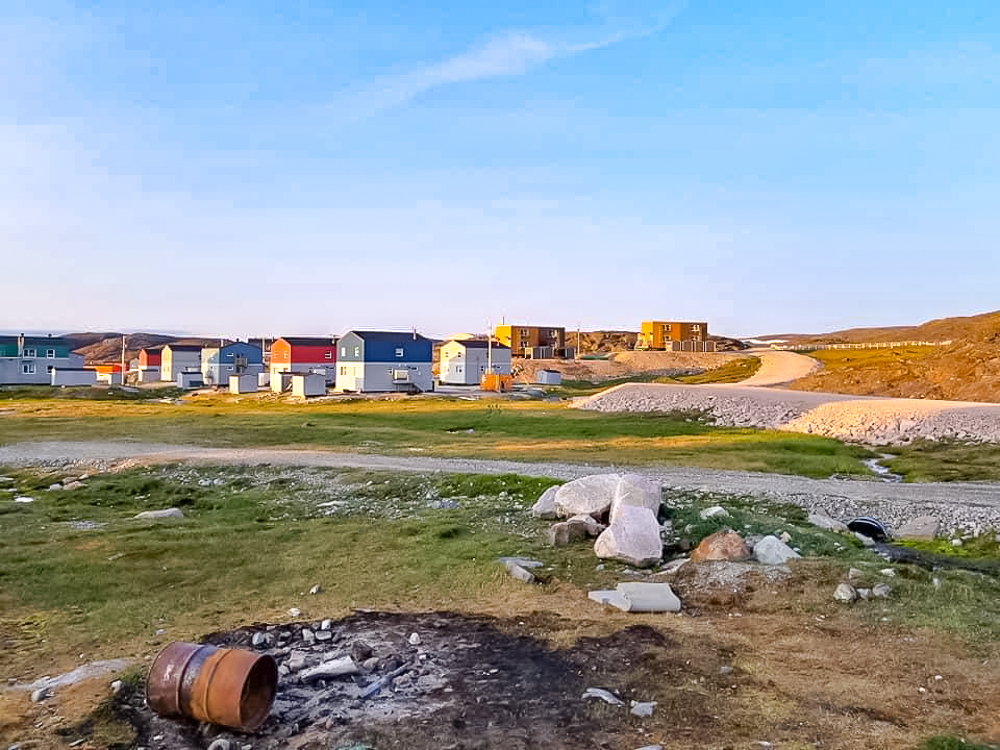
Accommodation
Ivujivik has only one place to stay, the co-op hotel. The cost for one night is $195. A collective kitchen is available for the hotel’s occupants. However, there is no restaurant, so you have to go to the village cooperative to buy food.
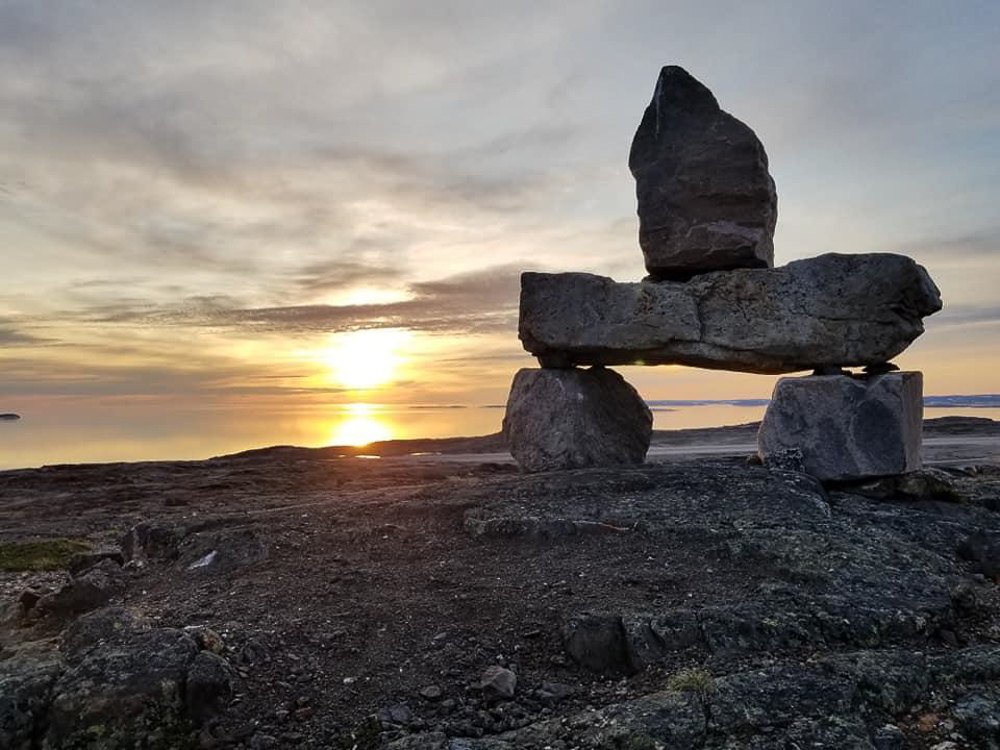
Main attractions
- Digges Islands : A historic site off the coast of Ivujivik where there is a large colony of thick-billed murres, a penguin-like seabird. This beautiful place is accessible by boat from Ivujivik. We’re talking about a one-hour trip. However, it is important to hold onto the sides of the boat, as the waves can be rough!
- Cape Wolstenholme: This is the northernmost point in Quebec and a renowned historic site. In fact, it was the first reported place of exchange between Inuit and Europeans in 1610. This location is 28 kilometers northeast of Ivujivik.
- Polar bear sightings and walrus hunting : It is very common to see polar bears near the village. It is recommended not to venture out of the village without a hunting weapon in spring and summer, to avoid any confrontation with these gigantic beasts which are much more voracious and unsympathetic than those found in the Zoo! It is also possible to taste fresh walrus in July, when the walrus hunt is at its peak. Be sure to marinate the meat for a few days, as the taste is very strong.


Akulivik
Akulivik or “the place that looks like the central point of the harpoon in the shape of a trident”has over 700 inhabitants. The village is located on a peninsula between Hudson Bay and the Illukotat River. The community is surrounded by large rock walls, the Youville Mountains, which rise several dozen meters.
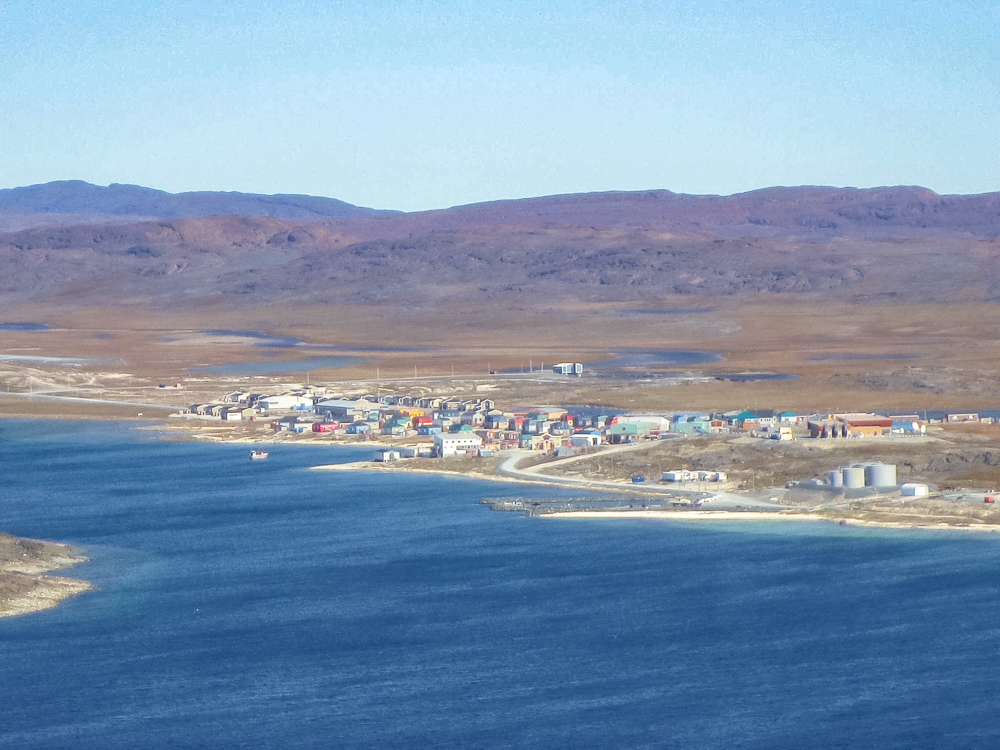
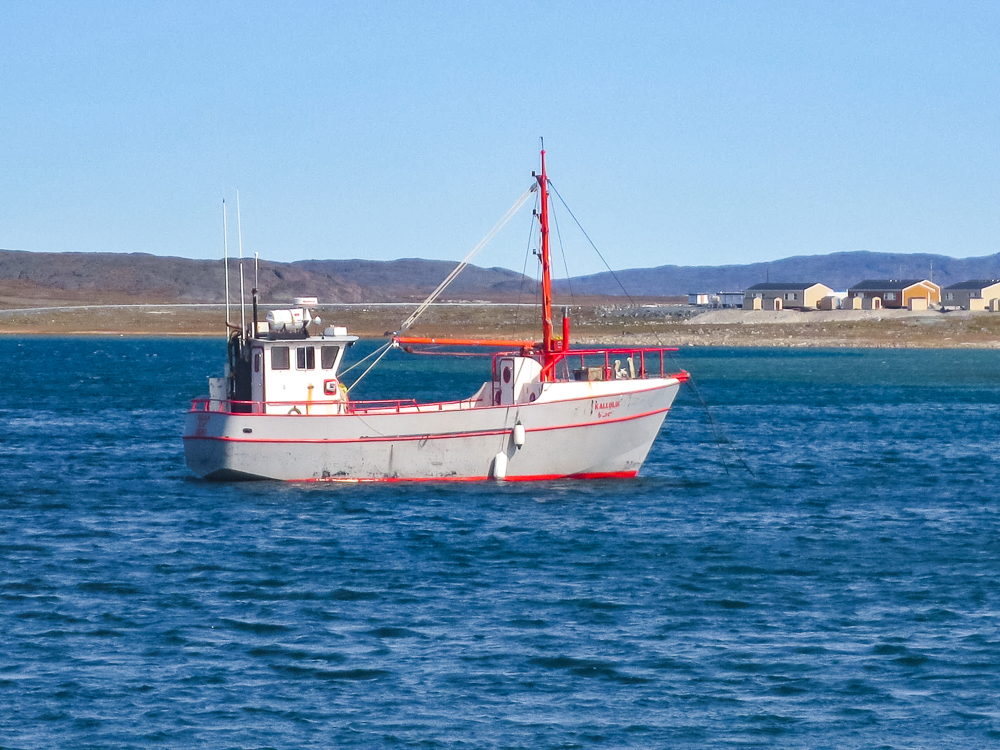
Accommodation
If you wish to stay in Akulivik, you have the option of staying in a co-op hotel. The cost for one night is $195. A collective kitchen is available. There are no restaurants in this community. However, it is possible to buy food at the local co-op or at the Northern convenience store.

Main attractions
- Cape Smith Island : This is a huge wildlife reserve 15 minutes by boat from Akulivik. You will be able to observe many wild geese, lemmings, as well as seals. Interestingly, this huge island is owned by Nunavut, so you can say you have visited Nunavut after your visit to this island.
- The Kuuvik camp : Camp site for hunters and fishermen between Akulivik and Ivujivik. This is a beautiful location, surrounded by several freshwater lakes and wide open spaces with tundra and northern wildflowers. Speckled trout and Arctic char are abundant, as well as caribou in the spring. Be careful, however, this place is difficult to reach by land; we are talking about an expedition of more than five hours by ATV. But this adventure is worth it; it’s the experience of a lifetime!
- Winter mussel harvesting : Another experience specific to the community of Akulivik that is worth the detour. Armed with iron bars, Akulivik residents drill holes in the ice in shallow waters. They then take long wooden rods and hang a net fitted to a hoop at the end. They will then scrape the bottom of the sea to collect mussels. An exotic experience that will allow you to taste raw mussels!
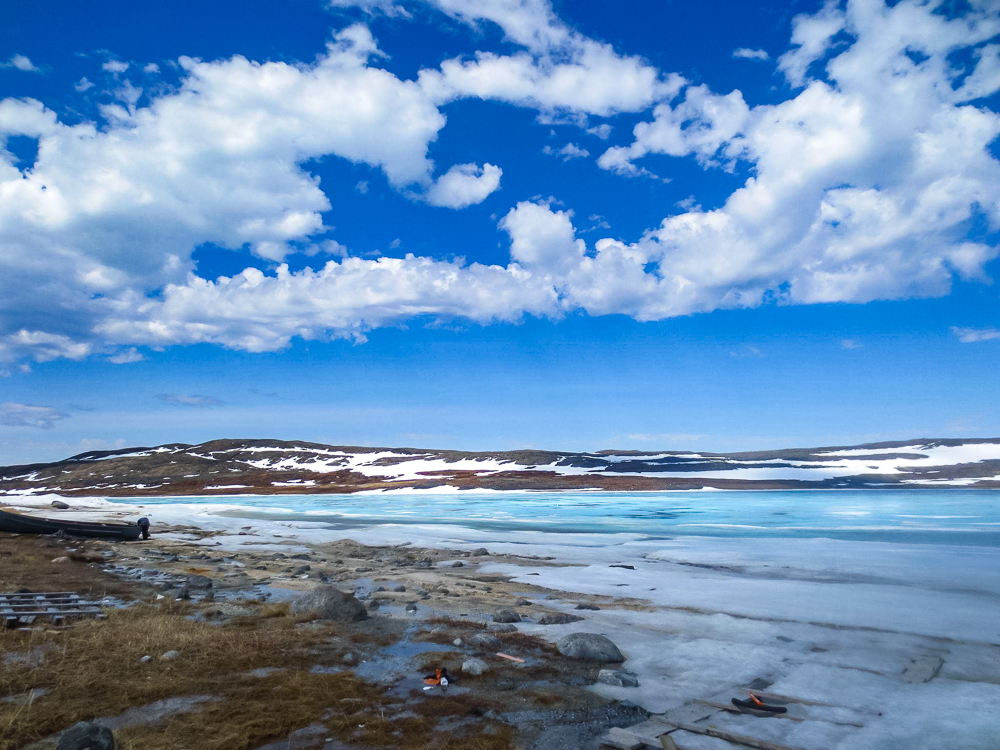
Puvirnituq
Puvirnituq or “the place where there is a smell of rotten meat” has a population of over 1,800 and is the political center of Hudson Bay. The village is located on the north shore of the Puvirnituq River.
It is one of the three Nunavik communities that refused to ratify the 1975 James Bay and Northern Quebec Agreement.
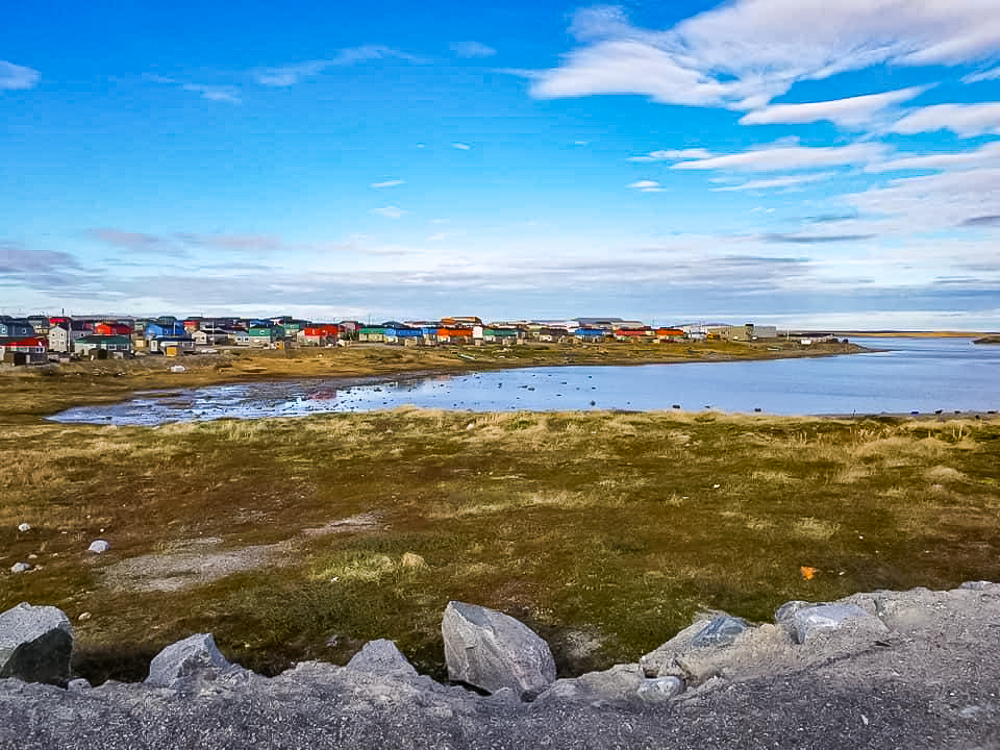
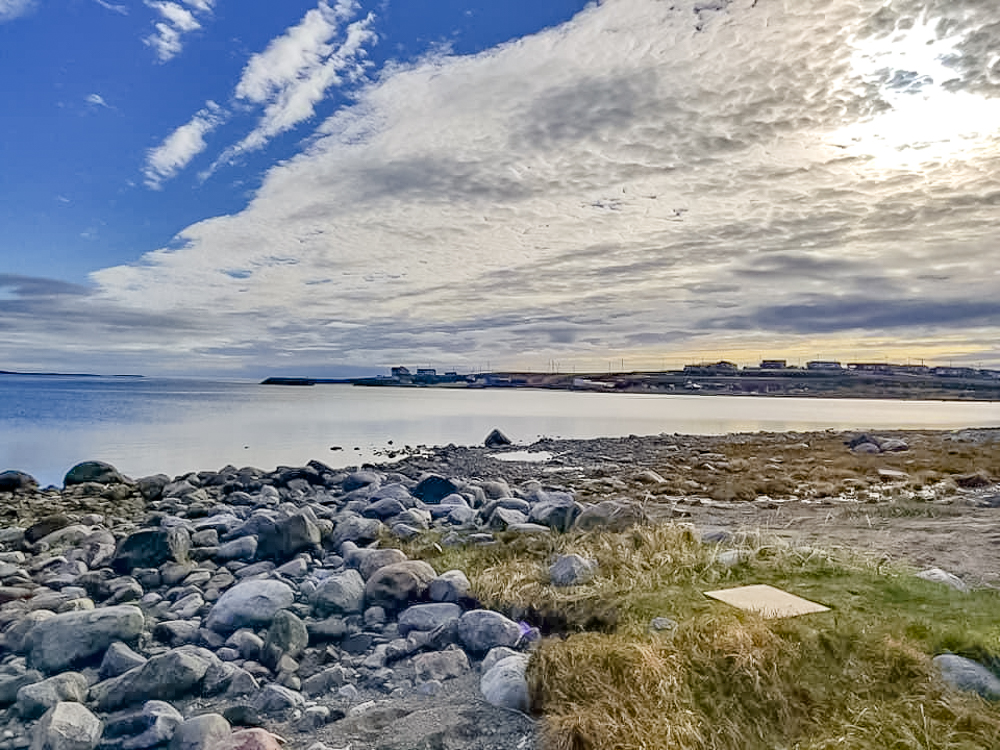
Accommodation
There are two options if you wish to stay in Puvirnituq
- Co-op hotel : The cost for one night is $195. A collective kitchen is available. It is also possible to eat at a large community cafeteria that serves many fast food items. You can also purchase food at the local co-opand at the Northern convenience store.
- Hotel Novalinga : The cost for one night is also $195. Please note that there is no collective kitchen. You can, however, eat in the community cafeteria or stock up on food at the local co-op or Northern convenience store.
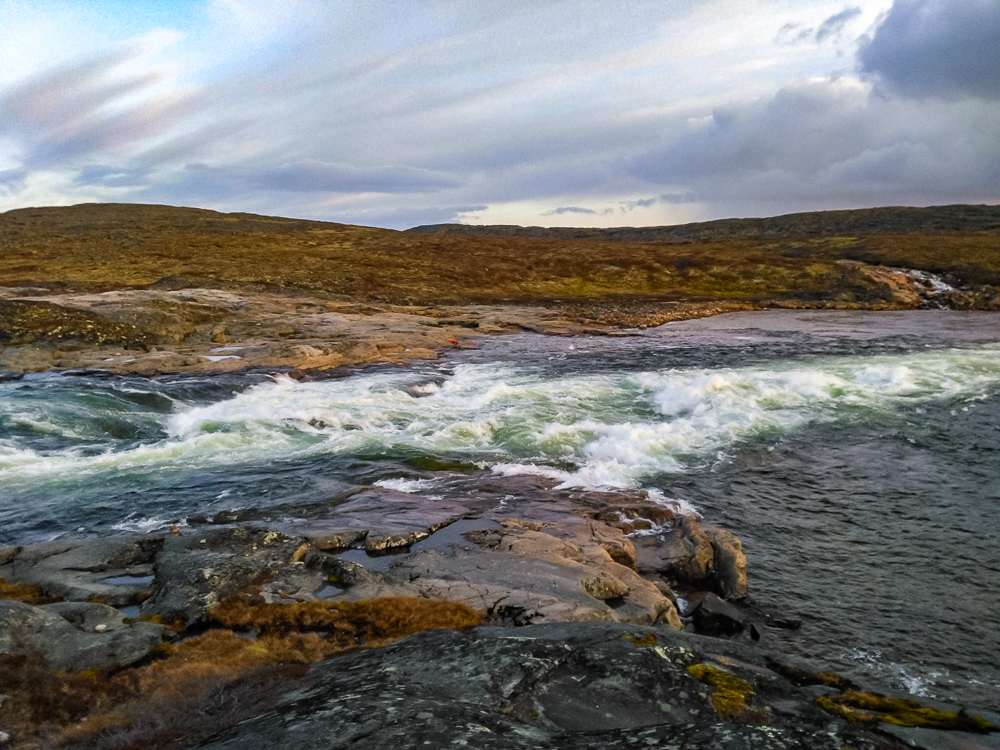
Main attractions
- The Snow Festival : This is one of the most unifying events that allows us to exhibit the creations of several local artists in terms of sculptures, necklaces and earrings among others. There is also a large ice sculpture and igloo contest with a substantial prize for the winning artist. Finally, musical performances crown this festival which takes place in March of each year.
- The Saputik Museum : This traditional museum is home to many Inuit artifacts from different historical periods. There are sculptures and various works of art. This initiative was started by Taamusi Qumaq, a true figurehead of Inuit history. He created the first dictionary in Inuktitut and had a long political career in Nunavik until his death in 1993.
- Archaeological sites: Several archaeological sites are located near Puvirnituq. We find various objects dating from the time of the Thule, the ancestors of the present Inuit.
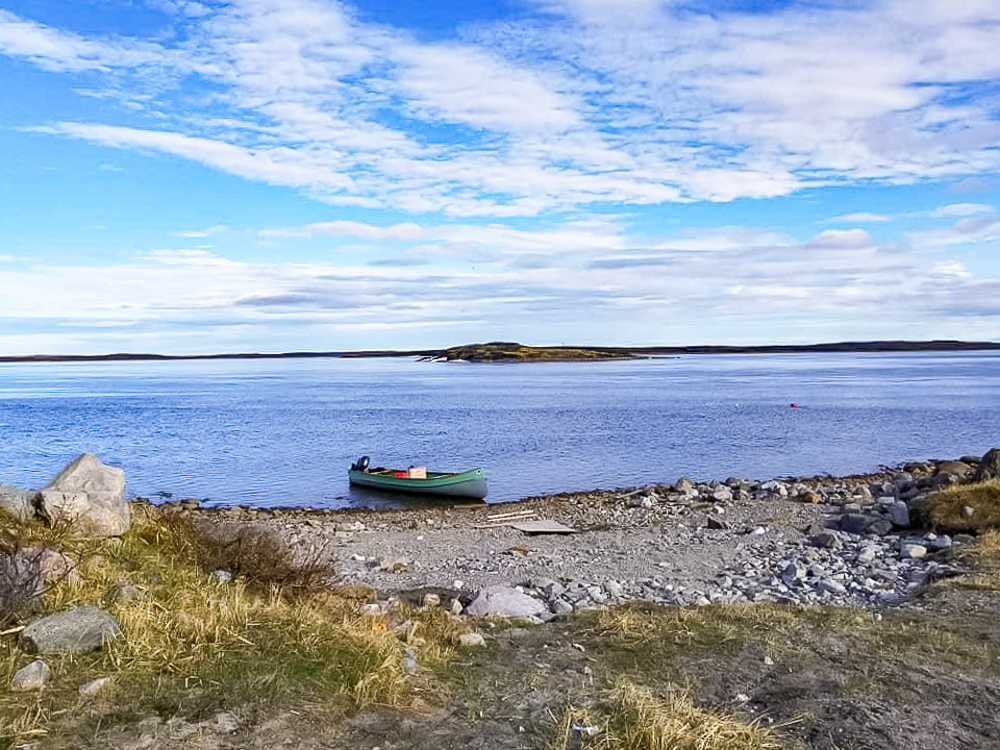
Inukjuak
Inukjuak or the giant is composed of more than 1,800 inhabitants and represents the economic center of Hudson Bay. The village is located on the banks of the Innuksuak River, which is known for its high flow rates and its upcoming hydroelectric project.
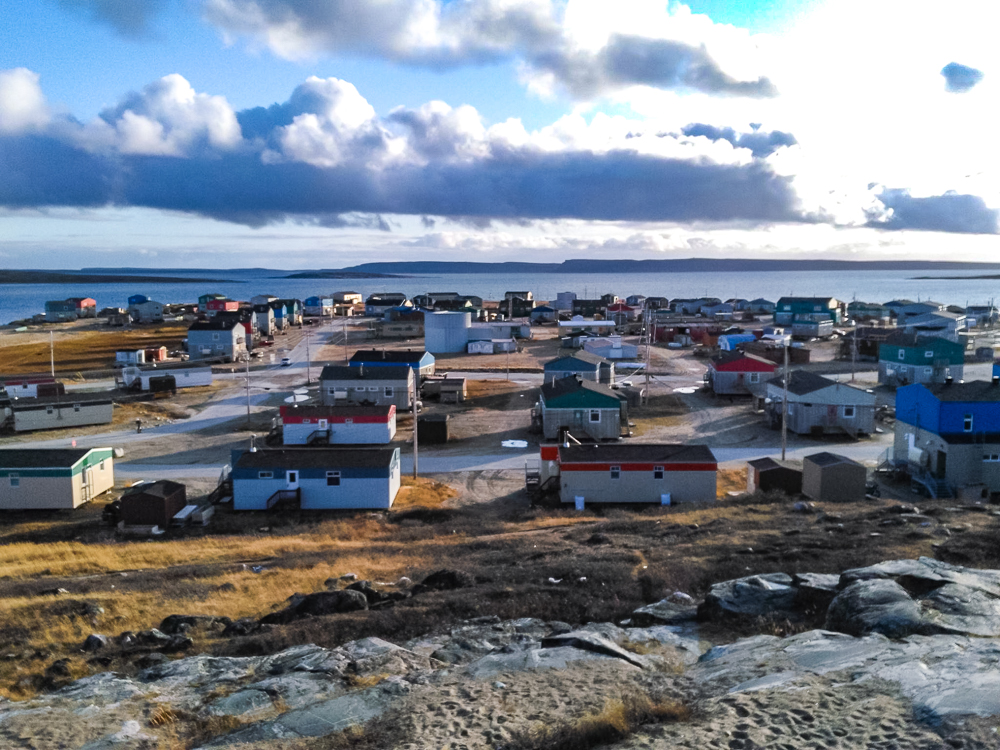
Accommodation
Inukjuak has only one place to stay, the co-op hotel. The price for one night is $195 and there is a collective kitchen accessible to all hotel users. However, there are no restaurants in the community. You can, however, buy food at the local co-op or Northern convenience store.
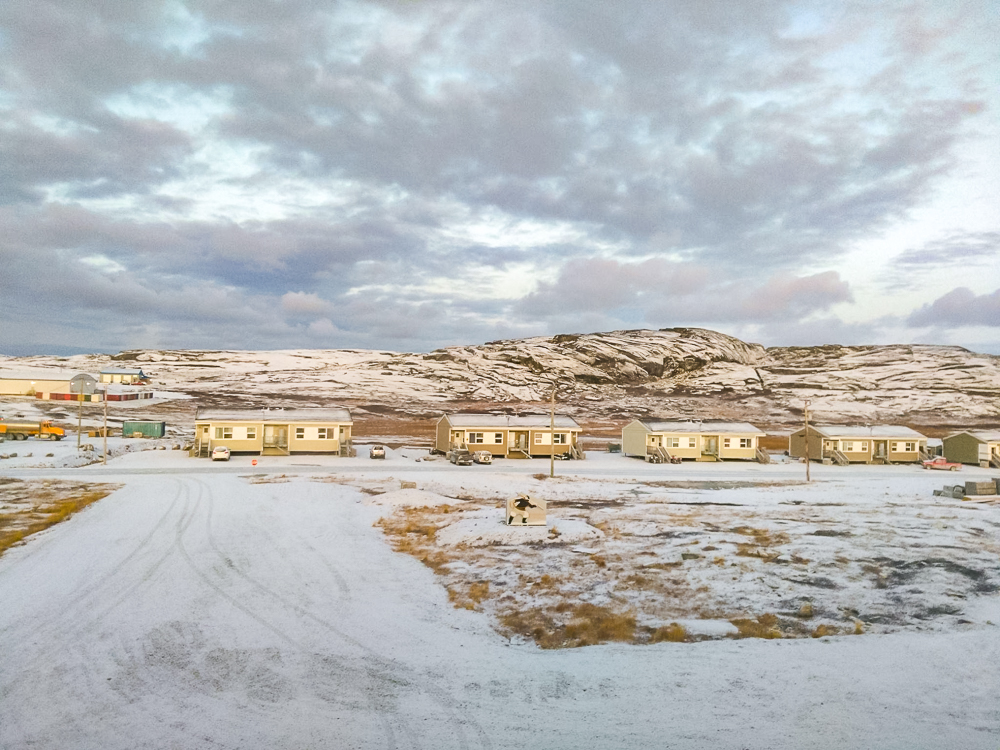
Main attractions
- Daniel Weetaluktuk Museum : Here you will find an extensive collection of hunting and fishing artifacts as well as many sculptures and traditional artworks. Daniel Weetaluktuk, now deceased, was an illustrious archaeologist from Inukjuak who, along with Jean-Luc Pilon, himself an archaeologist, built a large collection of artifacts. Many experts agree that Mr. Weetaluktuk is the founder of contemporary Canadian community archaeology. In short, a visit that is worth the detour!
- Local Craft Centre : Located in the heart of the village food co-op, this store sells many local crafts such as carvings, parkas, coats, mittens and kamiks. Please note that the prices are quite high and that the opening hours are limited to weekdays between 12:00 and 16:00.
- Hopewells Islands : A picturesque area on the edge of Inukjuak with large colonies of migratory birds. Note that these islands belong to Nunavut and that no human presence has been found there. An interesting experience that can be done by boat from Inukjuak.
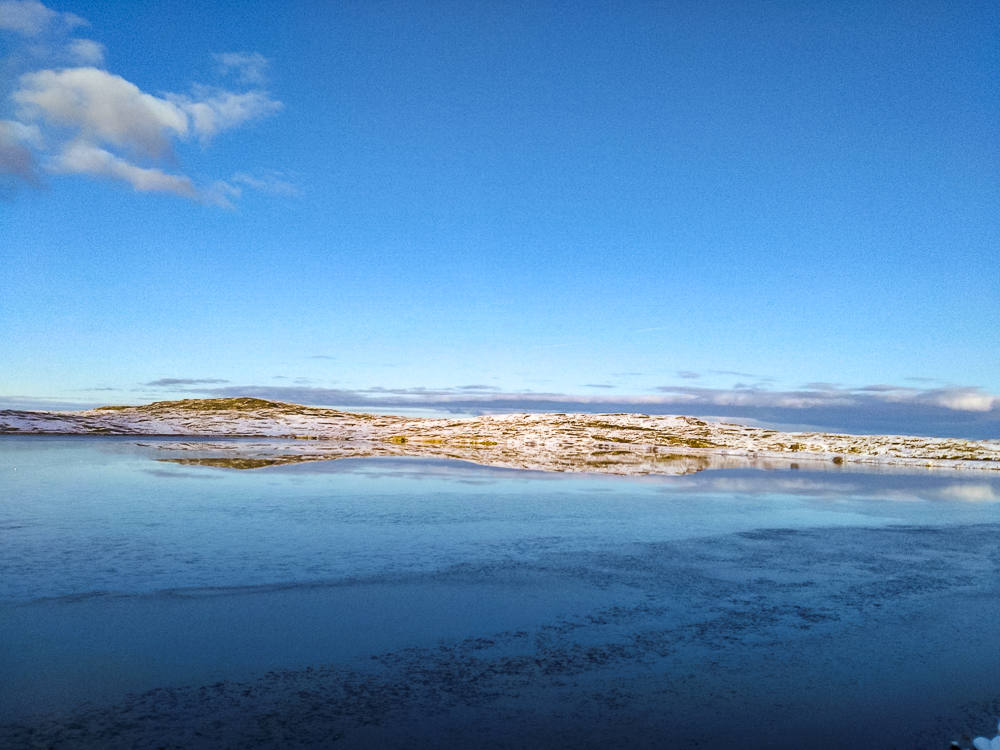
Umiujaq
Umiujaq or “the place that looks like a boat made of walrus skins” is home to over 500 inhabitants. This community is located on the shores of Hudson Bay, opposite the village of Sanikiluaq which belongs to the Nuanvut. Interestingly, the village has many sandy beaches with shells; however, swimming is still dangerous as the water is freezing, even in the middle of summer!
Accommodation
There is only one place to stay in Nunavik, the co-op hotel in Umiujaq. The price for one night is $195. A communal kitchen is available to hotel guests. However, there are no restaurants in this community. Food is still available at the local food co-op and at the Northern convenience store.
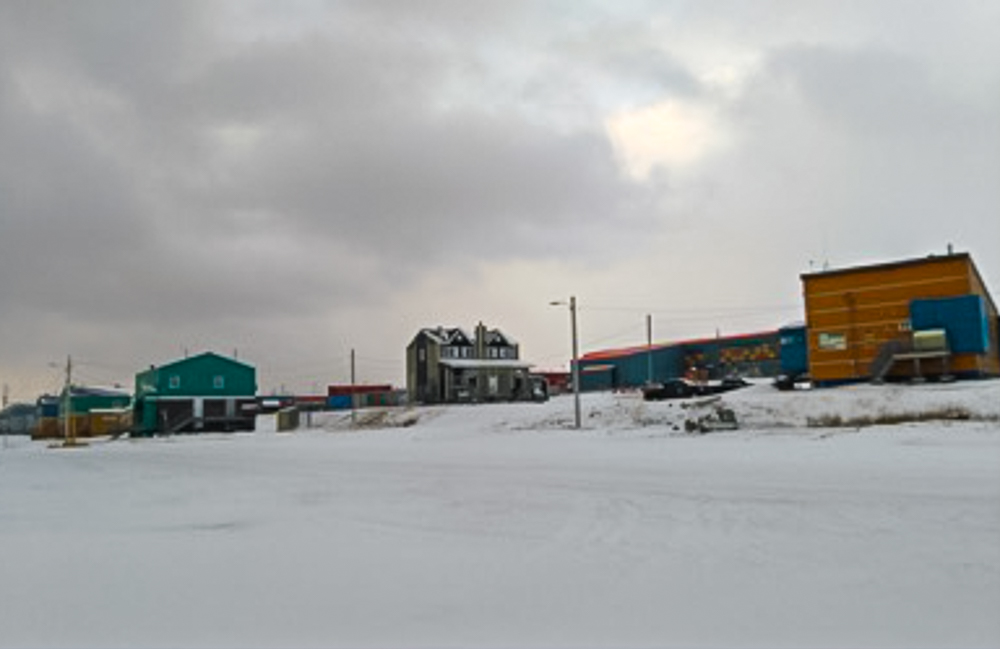
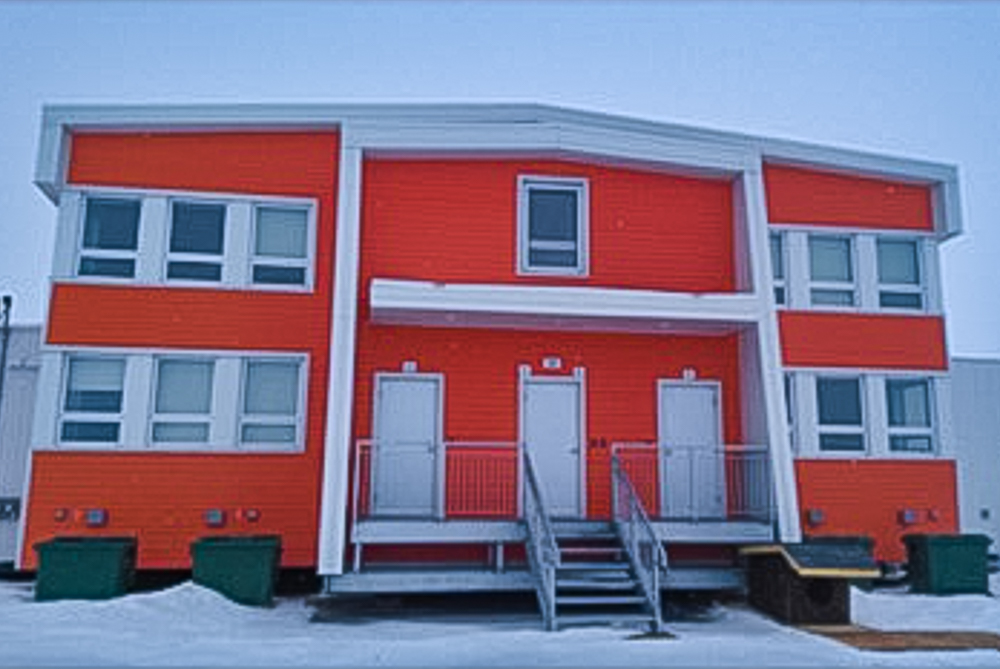
Main attractions
- Tursujuq National Park : A huge national park with many exhilarating activities such as sea kayaking, fat biking, boating and hiking. More specifically, a trip to this natural area will allow you to discover the beluga sanctuaries of Lake Tasiujaq, the opaque waters of Nastapoka Falls as well as overnight stays in tupiks and traditional igloos. Note that this park is larger than Belgium.
- Exploring the surrounding freshwater lakes : There are several lakes in the community of Umiujaq that are well worth a visit. One thinks in particular of the Clear Water lake which is the third largest fresh water lake in Quebec. Honorable mentions also to the Lac des Loups Marins and the Petit Lac des Loups Marins where it is possible to observe a vast marine fauna such as freshwater seals. Lac Guillaume-Delisle is also worth a visit for its sandy beaches and huge cliffs.
- Archaeological display : Like many other Nunavik communities, Umiujaq has a large collection of traditional artifacts in the municipal council offices. There is a huge collection of handicraft tools as well as ancestral sculptures. A visit that is worth the detour.
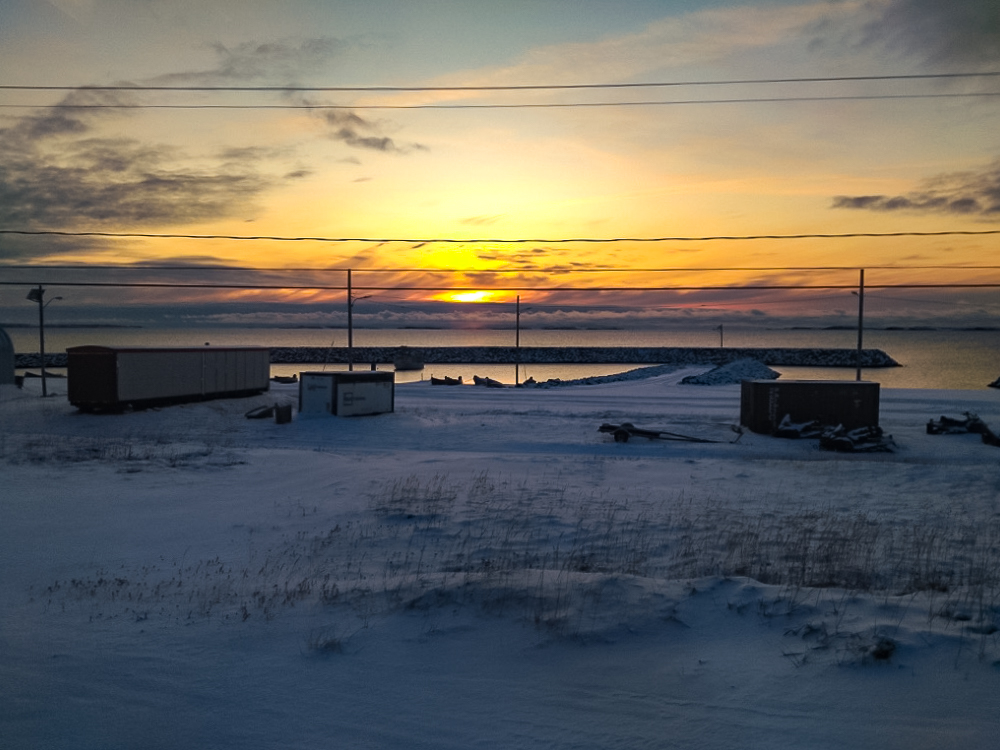
Kuujjuarapik
Kuujjuarapik or “the beautiful big river” has 700 inhabitants. This community shares its land with the Cree village of Whapmagoostui and is located at the entrance to the Great Whale River. Hudson Bay is also close to this village.
Accommodation
There are two lodging options in Kuujjuarapik:
- Co-op Hotel: The price for one night is $195. A communal kitchen is available to hotel guests. Several fast food options are available such as Whapmagoostui Restaurant, Airport Restaurant, Susan’s Canteen, Pear’s Corner and KFC. Otherwise, you can buy food at the local food co-op or at the Northern convenience store.
- Hotel Qilalugaq: The price is also $195 for one night. There is no collective kitchen in this establishment. You can, however, go to the restaurants and grocery stores listed above.

Main attractions
- Manitounuk Islands: This site, located some five kilometers from the village, is a must-see and is home to dozens of animal species including birds, whales, seals and beluga whales. In addition, you will be able to explore the Hudson cuestas(rocky beaches with towering mountains) that border these islands.
- Amitapanuch Falls: Another breathtaking place, Amitapanuch Falls is located inland and is the natural habitat of many wild animals such as wolverines and lemmings.
- Traditional Art Collection: This collection is located inside the Asimautaq School and is the work of Canadian Army veteran and Inuit artist Eddy Weetaluktuk. The latter donated a large number of his personal works (paintings and sculptures among others) to the local school in Kuujjuarapik before his death in 2005. Its collection is worth a visit if you have an interest in Inuit history.
Conclusion
All in all, I can confirm that a trip to Nunavik is well worth it if only for the extraordinary cultural experience it provides. I would also add that the richness of this trip lies in the warm welcome of the Inuit. Indeed, although reserved by nature, they quickly show great generosity and openly and humbly share with us the riches of their territory.
I believe that the exorbitant prices for air travel and accommodation in particular, could slow down many. However, I am pleased to inform you of recent government talks aimed at making transportation and accommodation more affordable in Nunavik. These discussions, which are currently in their infancy, are aimed at significantly reducing these costs before 2024. So there is hope!
In the meantime, you can still travel to Kuujjuaq with Aeroplan points and try the “nunavik” experience.


